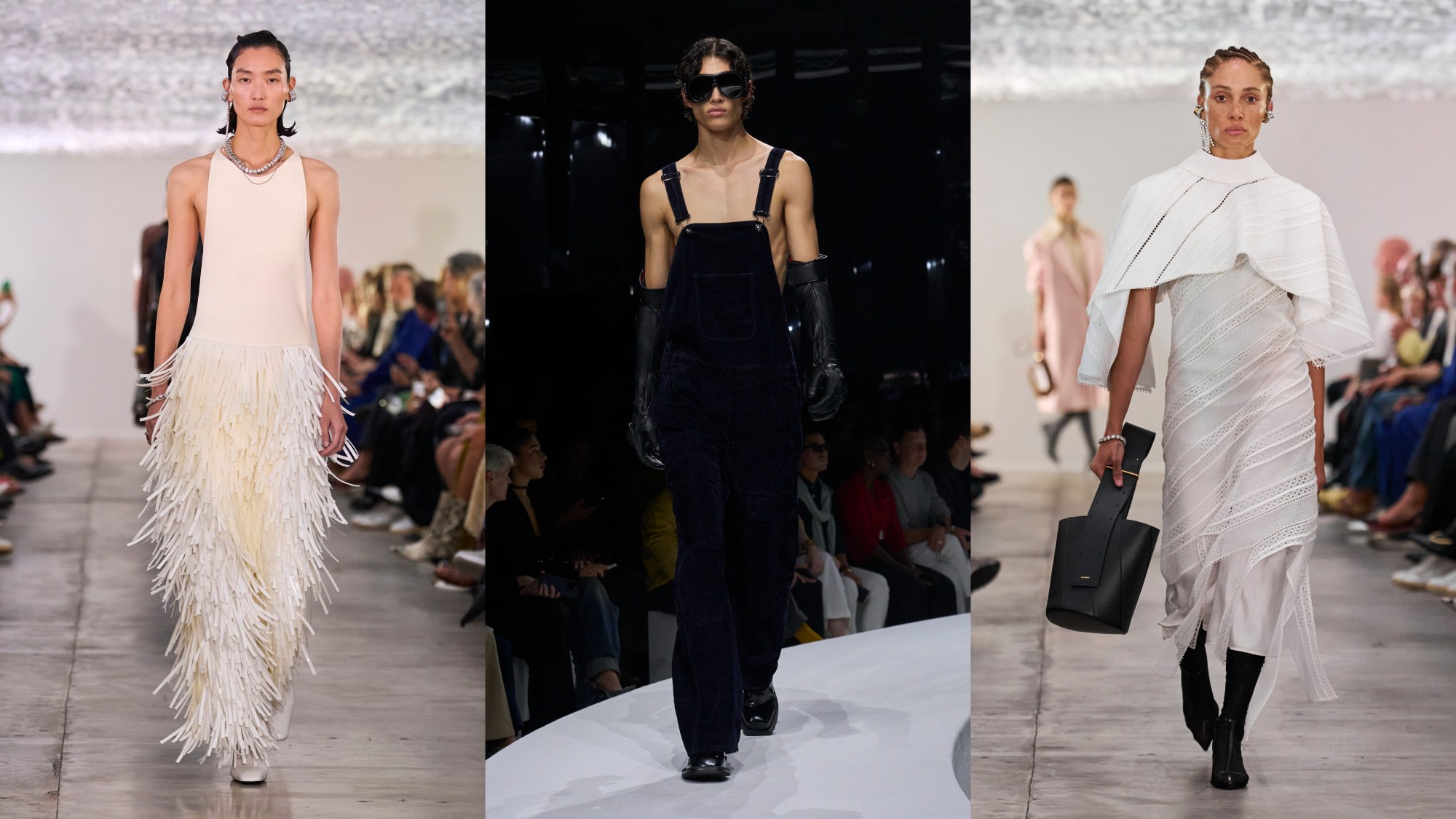Milano, we’re in you! Hot on the heels of London’s weird and wonderful outing, the Italian home of fur-coated sciuras and sprezzatura gentlemen plays host to some of the chicest and oldest fashion casa’s offerings. And, sì, aside from the big dogs we know and love, there’s plenty of treats for you fashionistas. Think couturier eleganza over at Fendi, baroque realness at Versace and new beginnings at Sabato de Sarno’s Gucci. That’s not to mention to Prada, where we’re expecting frazzled English woman 2.0, a new creative director at Tom Ford, and – with any luck – a fresh but kitschy face for Moschino. Speaking of bad-taste-made-good, Diesel’s outing is bound for sexed-up denims, while MM6 Maison Margiela never misses the mark for kooky cuts. Of course, if the ghost of Helmut Lang is still haunting you, Jil Sander has your back for back. Billionaires, it’s time to fash-up; Ferragamo and Bottega Veneta have stealth wealth covered, and if you panic, there’s always your old friends Loro Piana, Brunello Cucinelli and the Armanis (Giorgio and Emporio, that is). In the meantime, we’ll be at Marchesi, nursing a triple-macchiato. Andiamo!
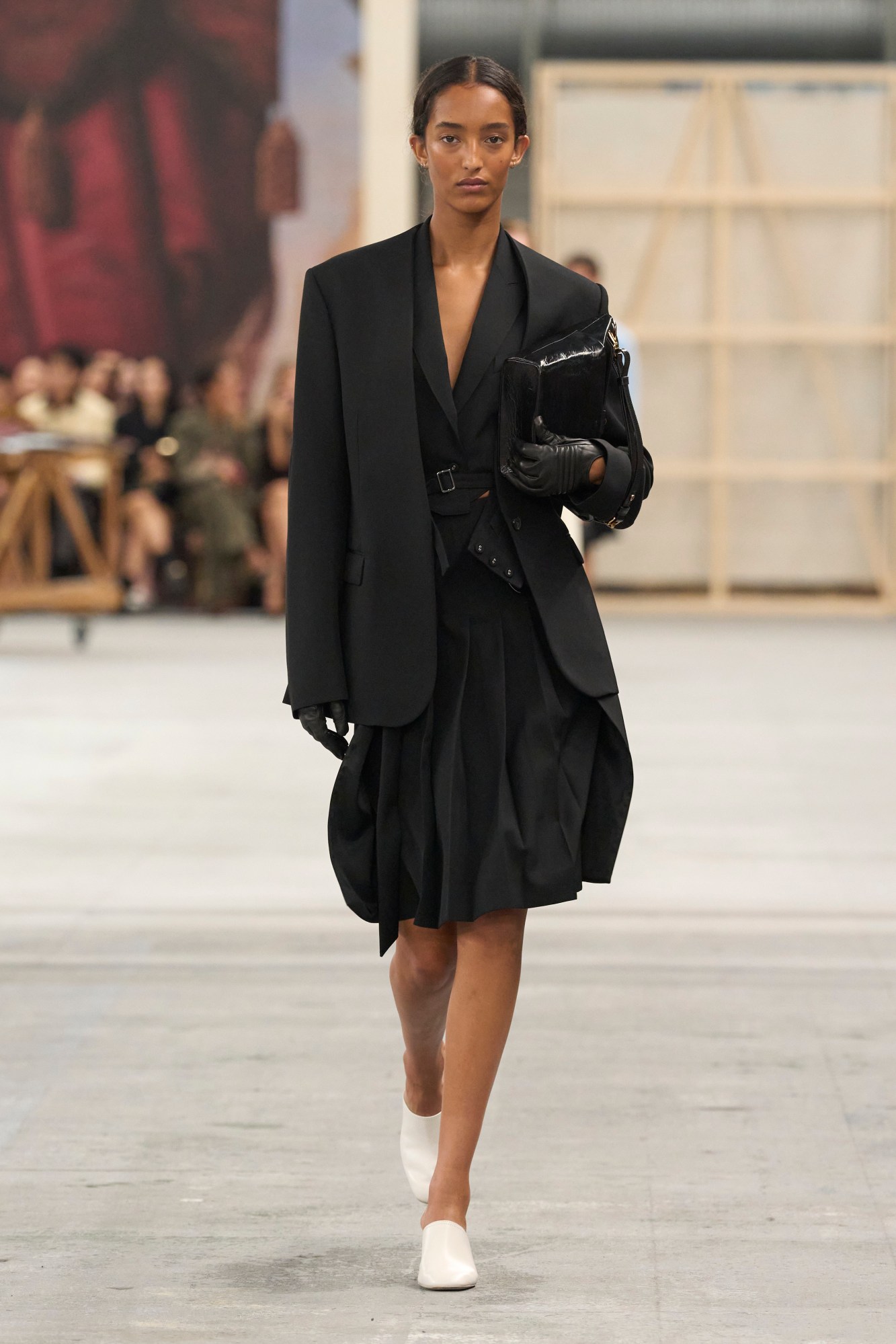

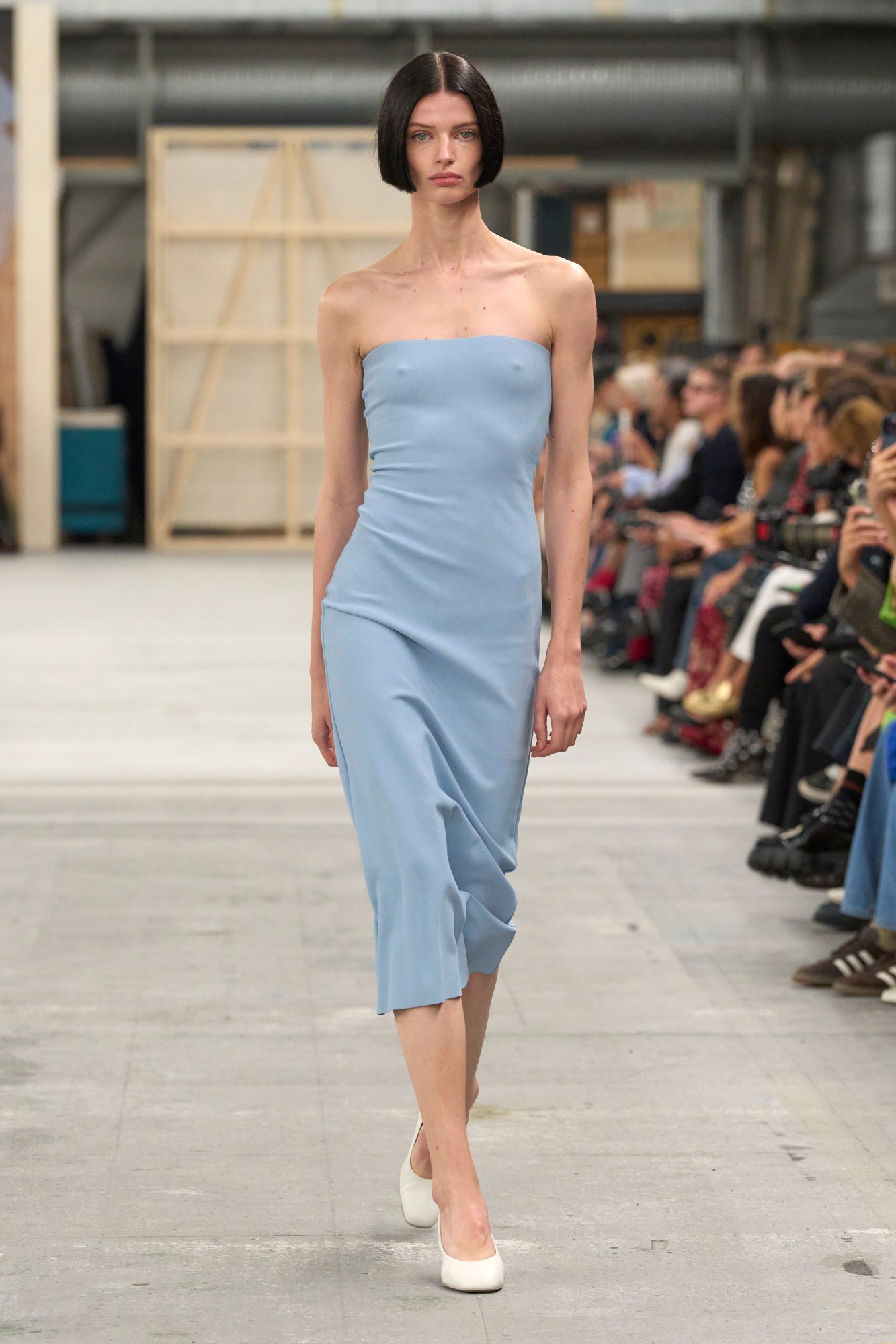
Tod’s
Thought stealth wealth was little more than a fleeting fad? Think again. If streetwear was the word on every fashionista’s lips last half decade, then the tweenies is all about understated finery. Today, fortune favours tradition, heralding a renaissance of the old, heritage brands that had, until recently, only scratched the surface of ready-to-wear. In fact, several labels of this ilk were in decline, including Tod’s when this craze for hot, young things taking on staid, old-money lifestyle maisons began.
Now, while we can’t speak to figures (we do looks, not books), we can affirm that Tod’s, since appointing its first across-board creative director, Walter Chiapponi, in 2019, is synonymous not only with buttery, heirloom trotters, but also the type of nappa coats and flouncy tailoring the contemporary quiet luxurian cannot get enough of. And so, it’s with wet eyes that we bid farewell to the original but no doubt inaugural mastermind behind Tod’s new era after his swan song show cementing all that he built in just four years.
Indeed, Walter’s tactile approach to tailoring maps across womenswear and menswear seamlessly. For SS24, this was felt in those nipped waistcoats, belted and buttoned with broaching across the hips for a sprezzatura bend, as well as the classy, lightly tapered suit pants in hues of burnt orange and cement. As for those pocketed utility belts, akin to a traditional leathermakers uniform, these were luxed up in cherry red, placed like corsetry across the obliques and finished with gold carabiners to hang one’s gloves. Aside from the chance metaphor, the latter detail was a clear reminder that Walter’s woman means business, armed with Lagerfeld-esque accessories.
Elsewhere, suit skirts were cut raw in black leather, teamed with a shortened car coat in meringue and baby-blue mules or neat black moto jackets and bug shades. Even this woman’s lazier look came with a tailored whisper: t-shirts were cut with little to no seams, caping down from shoulders like kimono sleeves before meeting generously cut pleated trews that shimmied across legs like silk. On foot? Those same Gommino loafers the house made its name on, pebbled across the side soles and wrought in rich, nutty brown. Think sciura gone masc.
Savvy CEOs across the fashion conglomerates will have been watching from afar. After all, in many ways, this is one of the first completed case studies — bar the short but sweet Kris Van Assche tenure at Berluti — on fashing-up the lifestyle bastions. Conglomerates need growth, and if any of their brands are missing out on a trick, fat cats want in stat. Of course, for now, the answers lie in the boardroom. JB
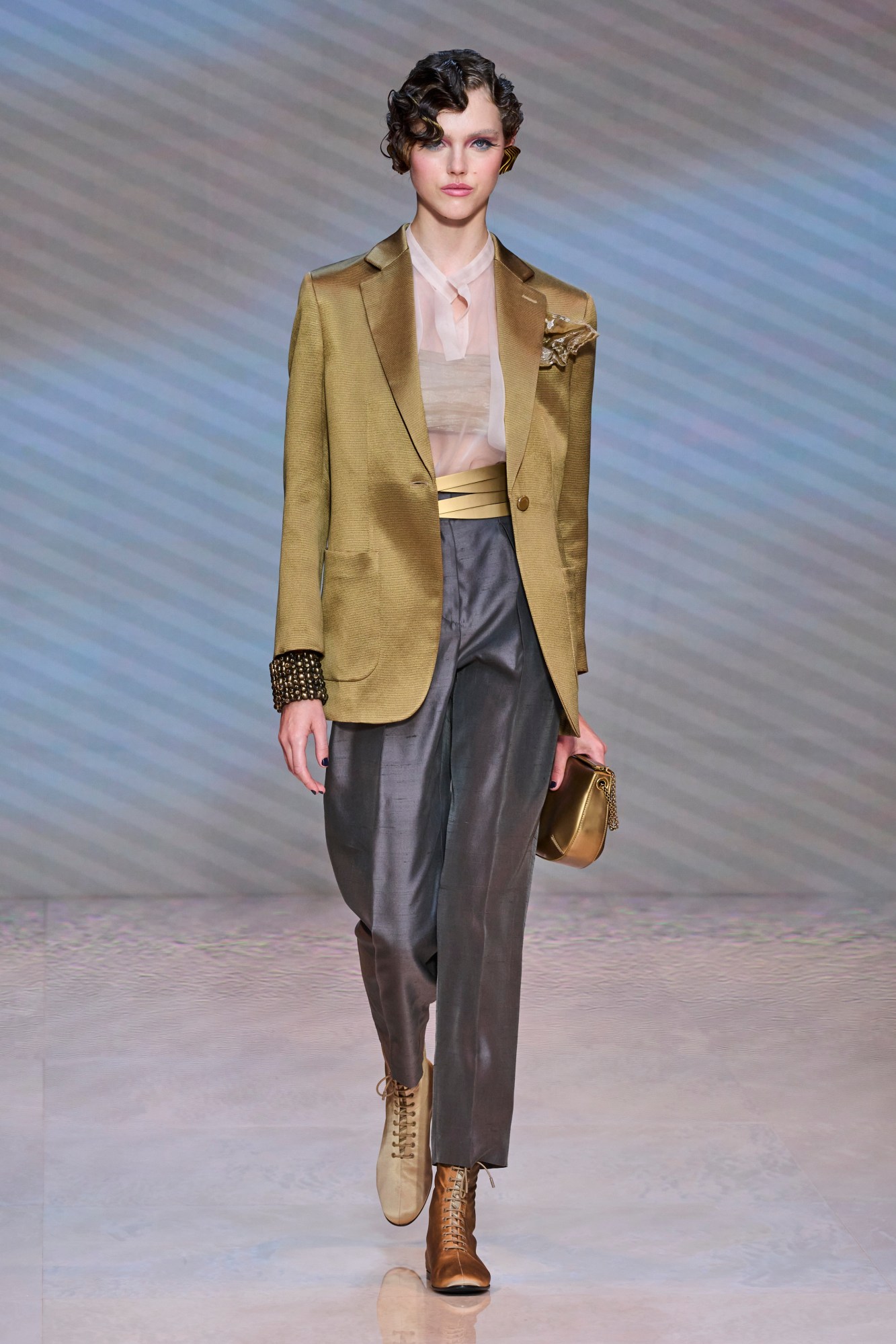


Giorgio Armani
If resort is all the rage right now, then Giorgio Armani will be laughing all the way to the bank, not least because his OOO woman is cut from a different cloth. Yep, instead of spending her well-earned cash poolside, guzzling champagne gratis à la Tanya McQuoid, this lady prefers the spoils of a bespoke holiday itinerary and ecotourism.
As such, Giorgio Armani bucked the trend for clumsy, peach sarongs and sickly pink bikinis, instead opting for wispy harem pants in gossamer shades, sea-green mandarin tunics in hammered silk and the occasional spritz of bedazzled fringing, smartened up with duchesse satin shirting below. In practice, it was quiet luxury off-duty, merging East and West via tapered, cropped trews (Italian tailoring 101) and navy blue kaftans, piped in aqua silk and finished with a tassel and healing crystal earrings.
Sure, it sounds beachy but the result filed neatly under eveningwear, arriving in long, trailing lines and swishy, bespeckled blouses. While the tangle of leather adorning one model’s neck felt akin to seaweed or even fishing tackle, its undulating and richly beaded construction every bit as fine as a Sheila Hicks’ tapestry. In many ways, the sea theme was just that. Vests were contoured with ribbing, forming patterns like underwater sand dunes seen from above, while their hems hovered gently across the hips. Elsewhere, couturier touches appeared in one standout shoulderless dress, its skirt lopped to the side – albeit elegantly – and held in place with tightly tiered sheer fabric. The latter came coloured in subtle increments of blue, like the meeting of currents.
Following on from last season’s homage to maquillage (and the self-care ritual that comes with it), this was equally steeped with a kind, rich-girl indulgence, perfect for the ladies that just need a break – if not a sabbatical. In keeping with this show’s closing looks, which came in pearlescent shades akin to the inside of an oyster, SS24 was about showing your taste through the way you unwind. In this arena, cultural cachet is not about glamour, but instead, aligning your chakras, cleansing your soul and hoping that the package-holidayers don’t clamour to your new favourite getaway. Life’s not a beach, it’s a juice-only, yoga retreat in the Seychelles.
Bottega Veneta
Review to follow.

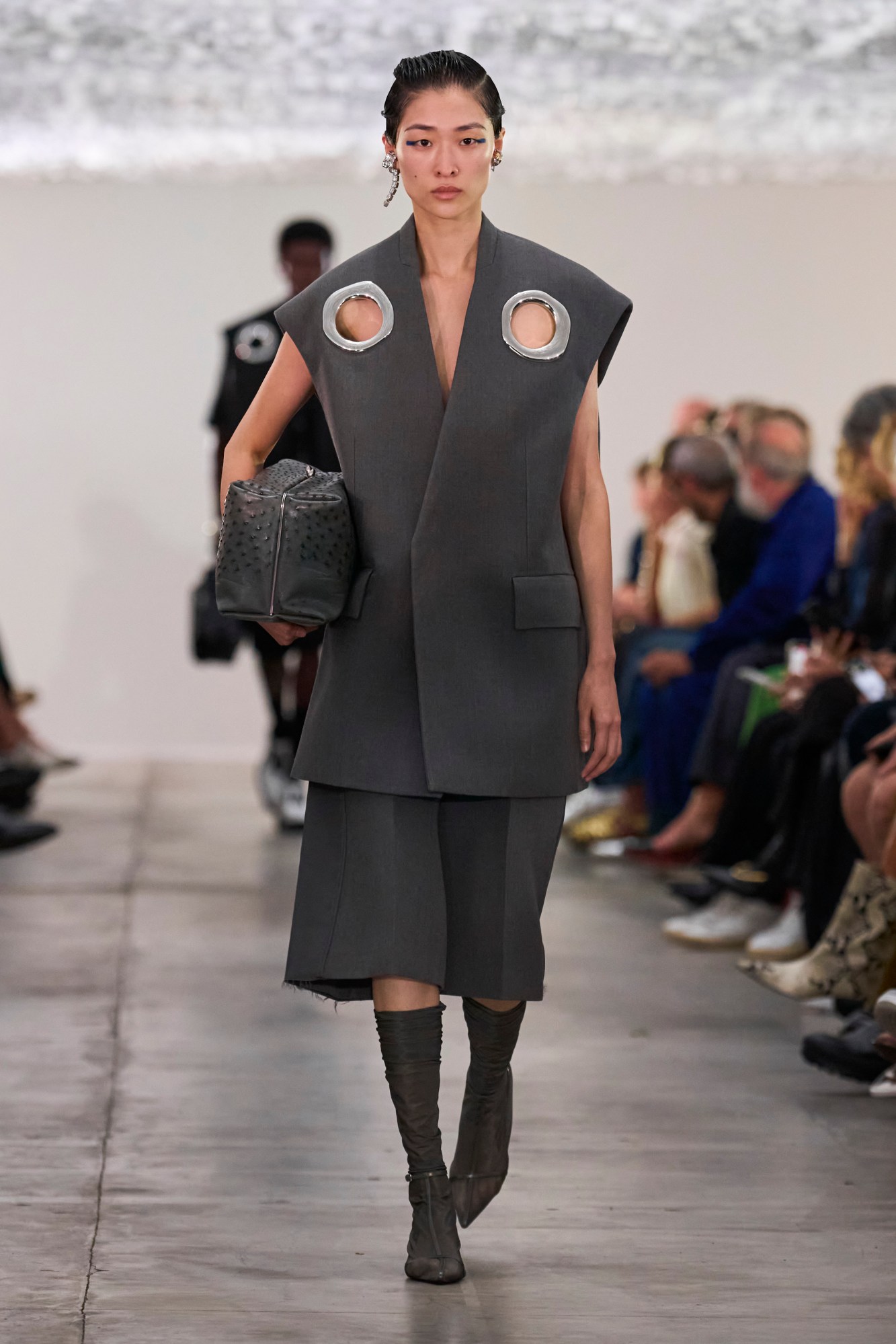

Jil Sander
If there’s anyone who must be rubbing their hands with glee at fashion’s turn towards muted elegance and the pared-back style of the mid-late 90s of late, it’s Lucie and Luke Meier, the husband-and-wife at the helm of Jil Sander. Since its founding, the brand has been a beacon for this in pursuit of the utmost sartorial discretion, and under the duo’s direction, the chicly sparse flame that Jil first sparked has been near-religiously guarded.
This season was, expectedly, no exception, though the fact that the collection’s tone was to be anticipated didn’t by any means make it feel predictable or stale. Rather, the appetites of Jil Sander acolytes old and new were well-sated by an expansive suite of precision-crafted, quietly decadent clothes that will easily assimilate into any wardrobe, while holding their own as decidedly special standout pieces. Proportions were, generally, generous, with squarish jackets and ankle-grazing coats in sumptuous charcoal cashmere complemented but voluminous – yet still immaculately structured – sweaters and bermuda shorts. Slinky knit tops – some embellished with layers of quietly clattering giant paillettes – with fused to sweeping skirts, oversized peplum shorts, and, in one standout look, a swishing mass of white acetate carwash fronds.
Leathers were butter-soft to the sight – and, presumably, to the touch – serving as a canvas for some latter flashes of eccentricity by way of the car coats and louche jackets in dappled python in dusty rose and brown. Perhaps the most noteworthy decorations here, though, stood out of their striking simplicity – the gigantic gold and chrome grommets built into the front yokes of wool waistcoats with hidden plackets, cream leather overshirts and clean, elongated vests. Quiet luxury, perhaps, but thankfully imbued with the directional edge that the genre so often lacks. MS
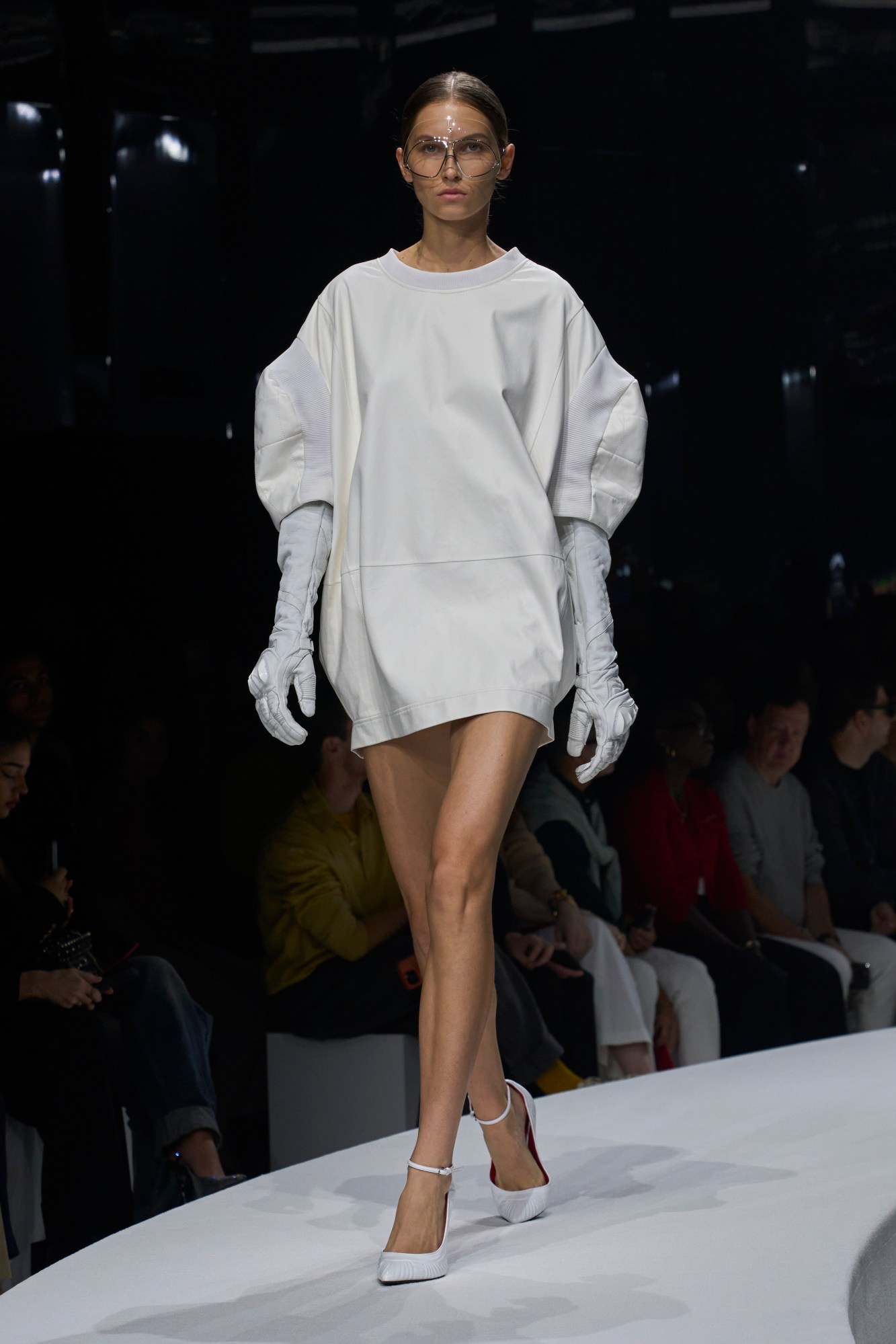


Ferrari
Since revving up its fashion operation two years ago under the creative direction of Rocco Iannone, Italian luxury car brand Ferrari has been vying for pole position at Milan Fashion Week, fielding splashy shows with top-tier casting in an attempt to compete with the city’s greats. This season saw the brand come the closest to that goal yet, with the presentation of a collection that adopted a decidedly more refined approach than in previous seasons.
Unfolding over the course of seven distinct colour stories – spanning glossy white through acid wash denim to deep navy and, of course, the brand’s emblematic Rosso Corsa red – the brand’s automotive heritage with explored with a refreshingly light touch. Sweater dresses and cropped zippered pullovers, both with dramatically dropped sleeves, came in buttery white leather, worn with armoured driving gloves, complemented by generously cut harrington jackets, wrap skirts and board shorts that suggested a sense of leisurely ease you’d associate with an Enzo owner.
Granted, another thing you’d naturally associate them with is a good dose of bling, which came by way of a diaphanous knitted jumper, midiskirt and body-skimming shiftdress, spangled with glimmering rhinestones in cable knit patterns, but that shimmer quickly dulled with the arrival of baggy coats, cargo pants and mechanic’s overalls in rugged acid wash denim. The connotations hinted at here were hammered home with the show’s closing suite, particularly with an unzipped patent leather racer suit in Ferrari’s trademark flame red. While admittedly a tad on the nose, it didn’t lessen the impact of a collection that saw Ferrari hit its pace. MS
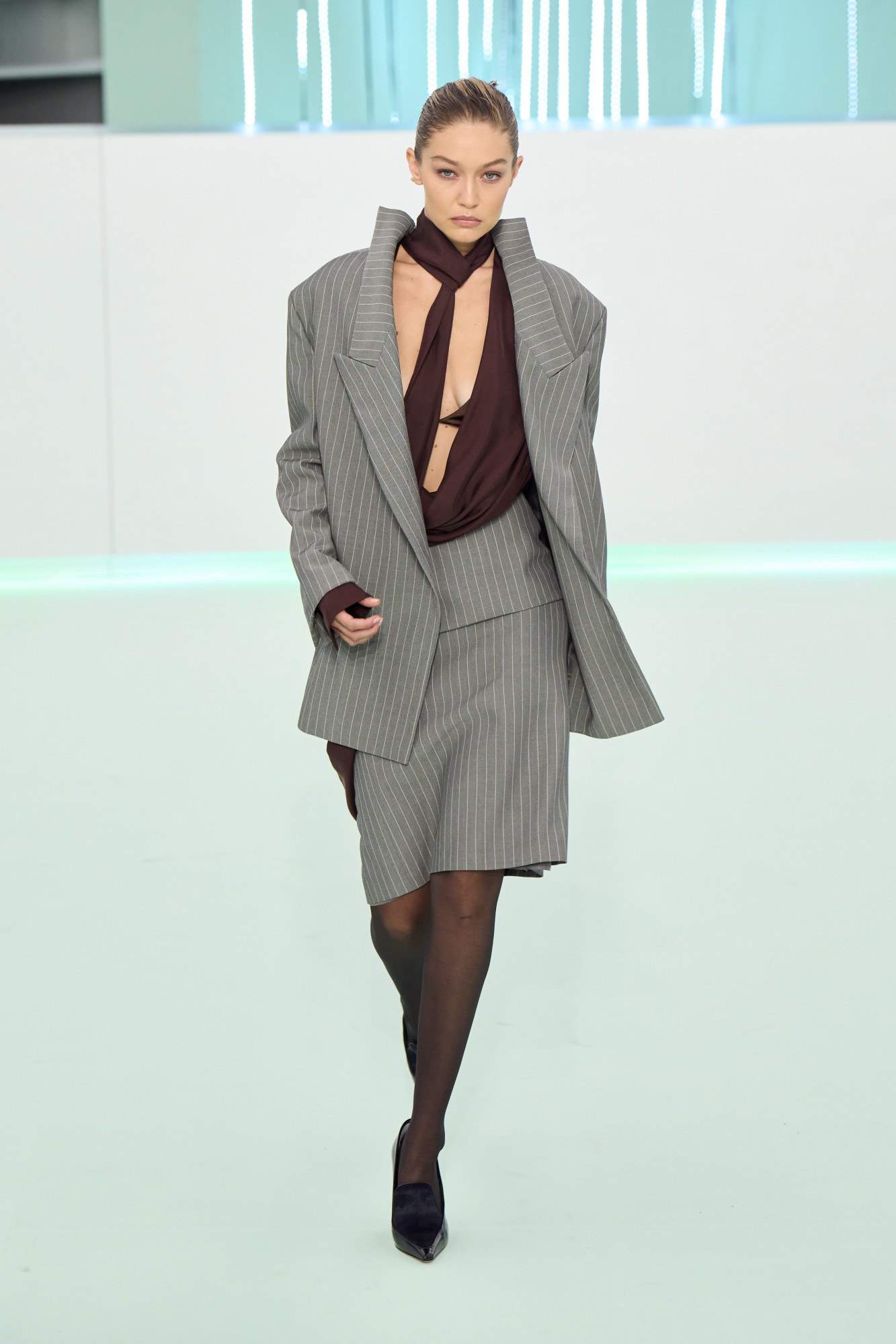
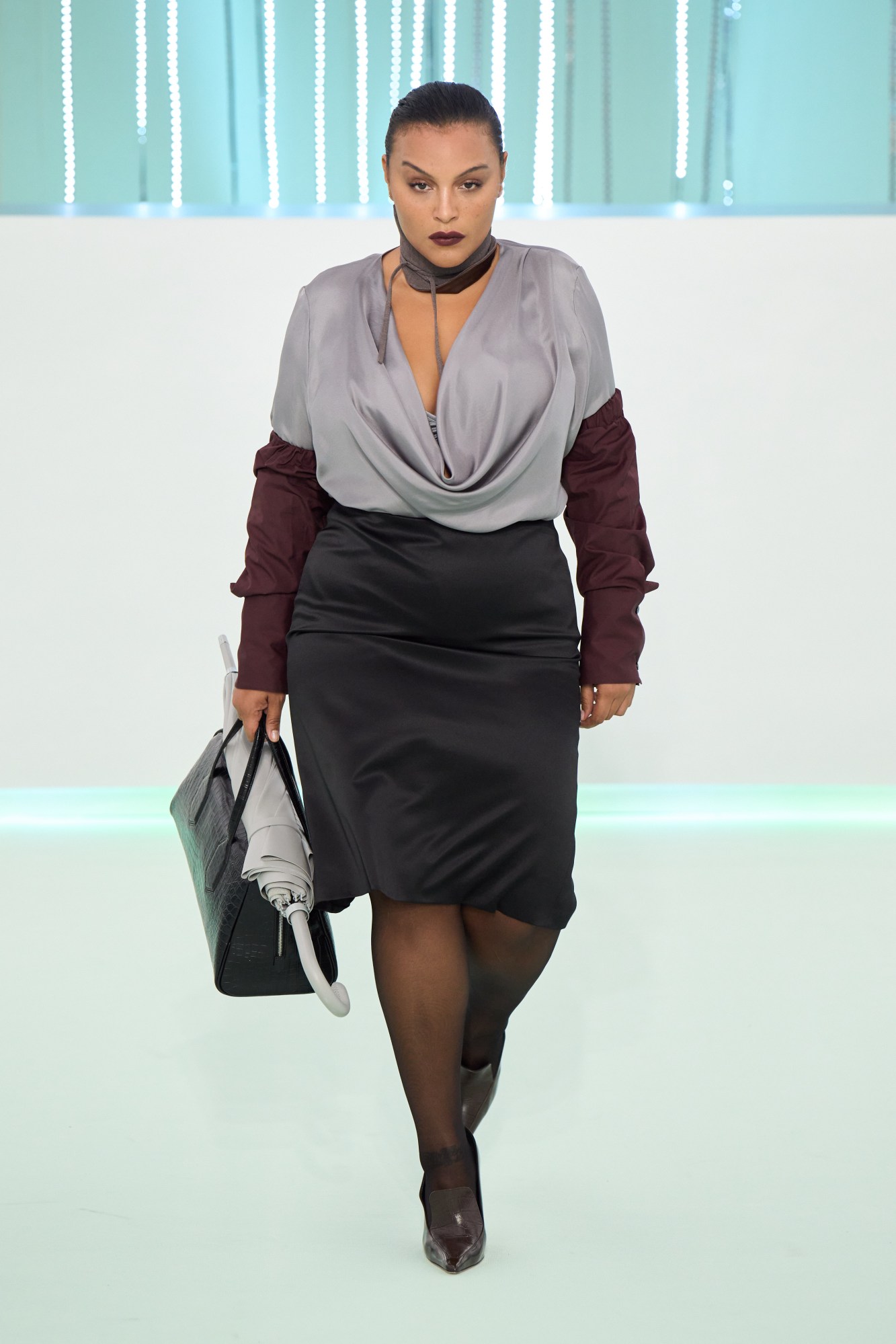
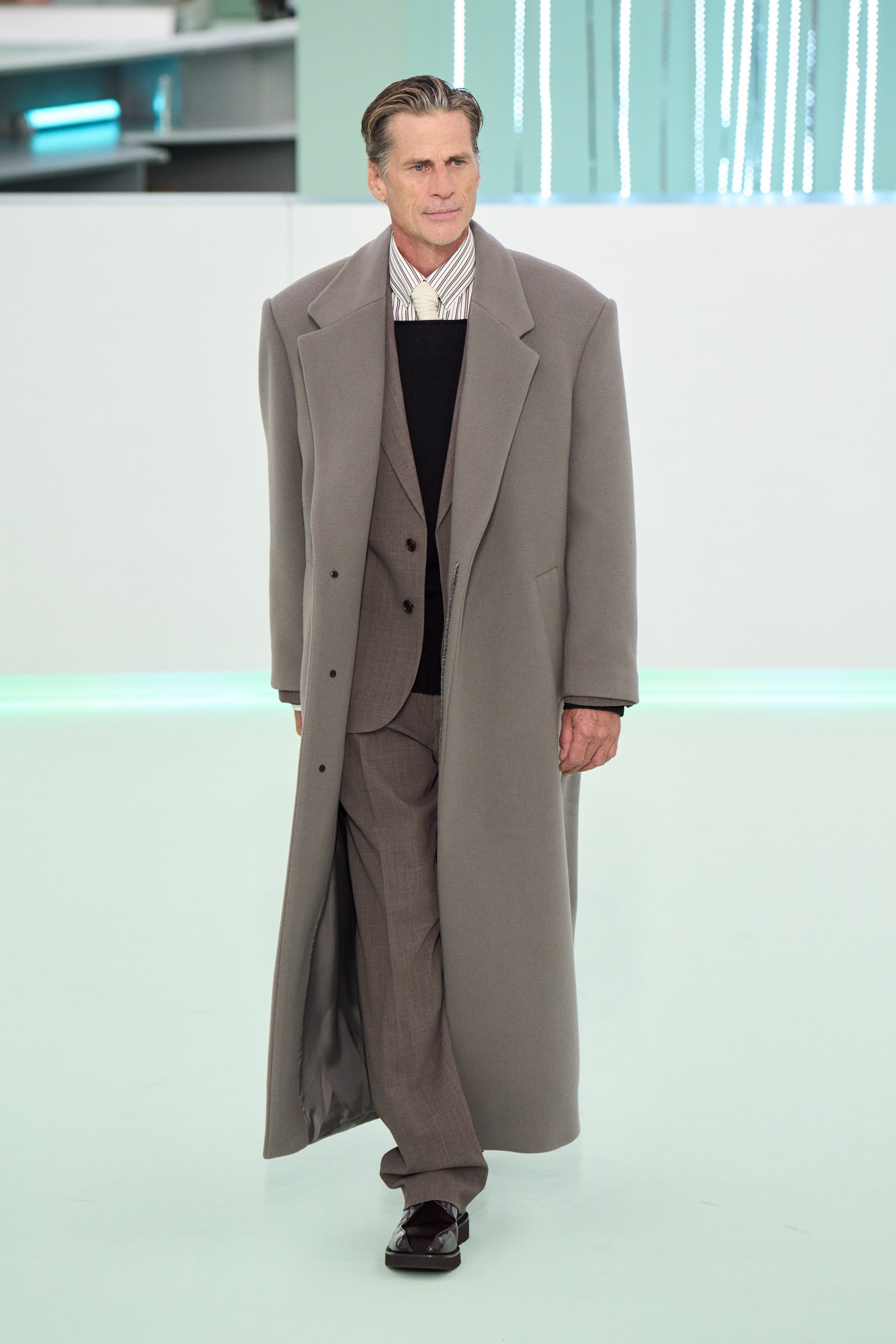
Boss
Thought the era of XYZ-core was dead? Well, it ain’t according to BOSS! For their latest collection, the German megabrand explored the well-trodden field of workwear – not the overalls, cargo pants and chore jackets that the term typically conjures, though, but rather the sort of garb that bankers, actuaries and insurance brokers wear to the office. Yes, this was an exploration of “CorpCore”, as well as the brand’s longstanding heritage as a go-to for office-appropriate looks.
Staged within a so-called “BOSS Techtopia” – “an ephemeral workplace and oasis of tranquillity and ergonomic design, where the needs of body and mind are seamlessly integrated,” a release read – beneath the watchful eye of everyone’s favourite social humanoid robot Sophia, the collection that filed out was a fastidious interrogation of the corporate wardrobe. In what read as a spurning of WFH cazh, pinstripes naturally dominated, figuring on trim double-breasted suits in stone and charcoal grey and straight smockish dresses. The conservatism of the sartorial genre was, however, countered by playful experimentation with respect to proportion and silhouette, the opening look sported by Gigi Hadid serving as a case in point: wearing a hoiked-up grey jacket with blown-up peak lapels and barely-there draped mocha crepe blouse, the look was more stumbling out of the Christmas party than clocking in fresh on Monday morning.
Beyond the more conscious attempts to twist the aesthetic vernacular of corporate dress, there were many eminently desirable clothes on show. Black wool car coats with contrast grey collars cut clean-lined silhouettes, counterposed by the reassuring slouch of round-shouldered quilted cream leather overcoats, while bateau neck sweaters and polo neck vests in weighty ribbed knit tweaked otherwise pedestrian garments with a subtle sensuality. Clothes to make our collective return to the office a little lighter to bear, if you will. MS
Versace
Review to follow.
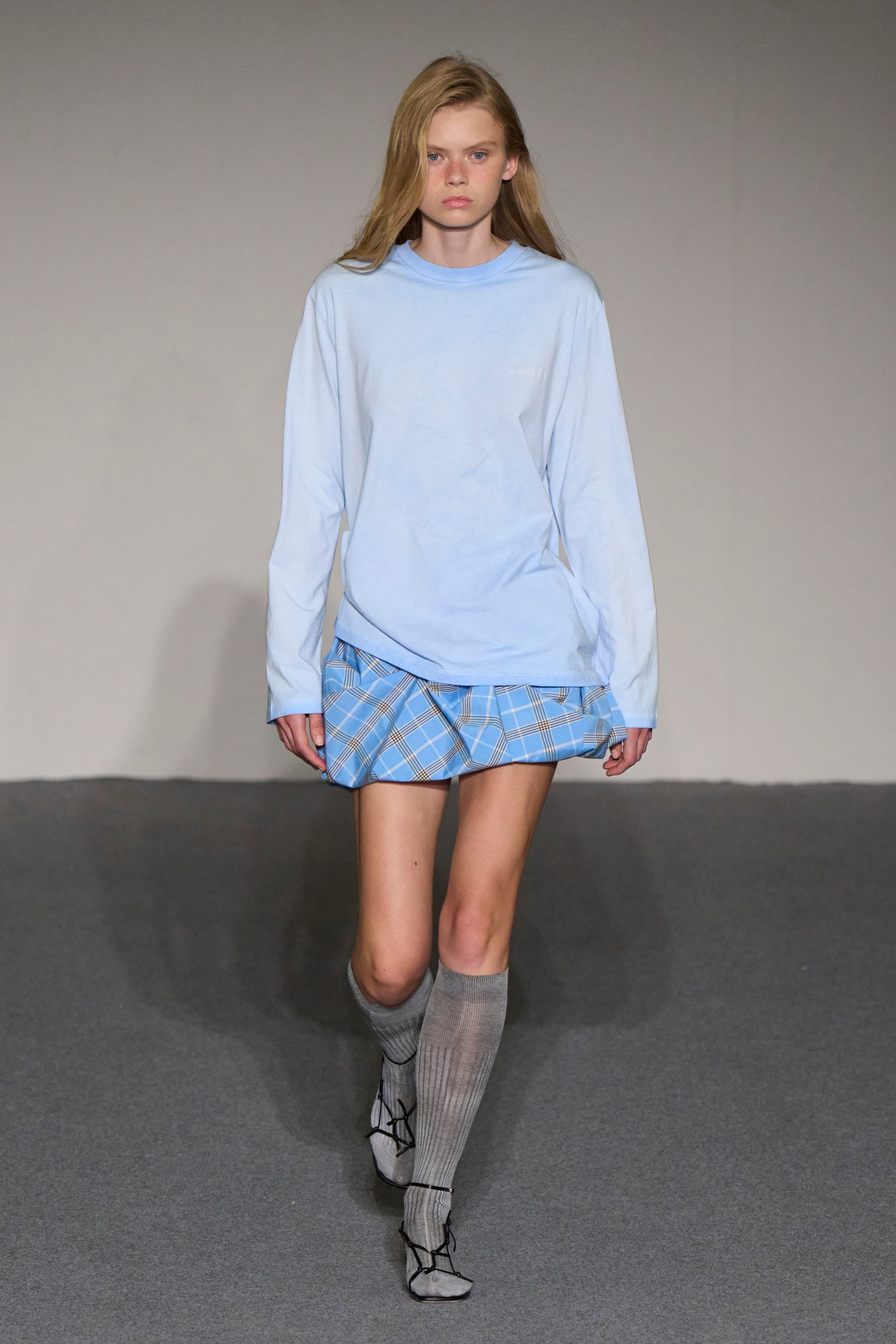
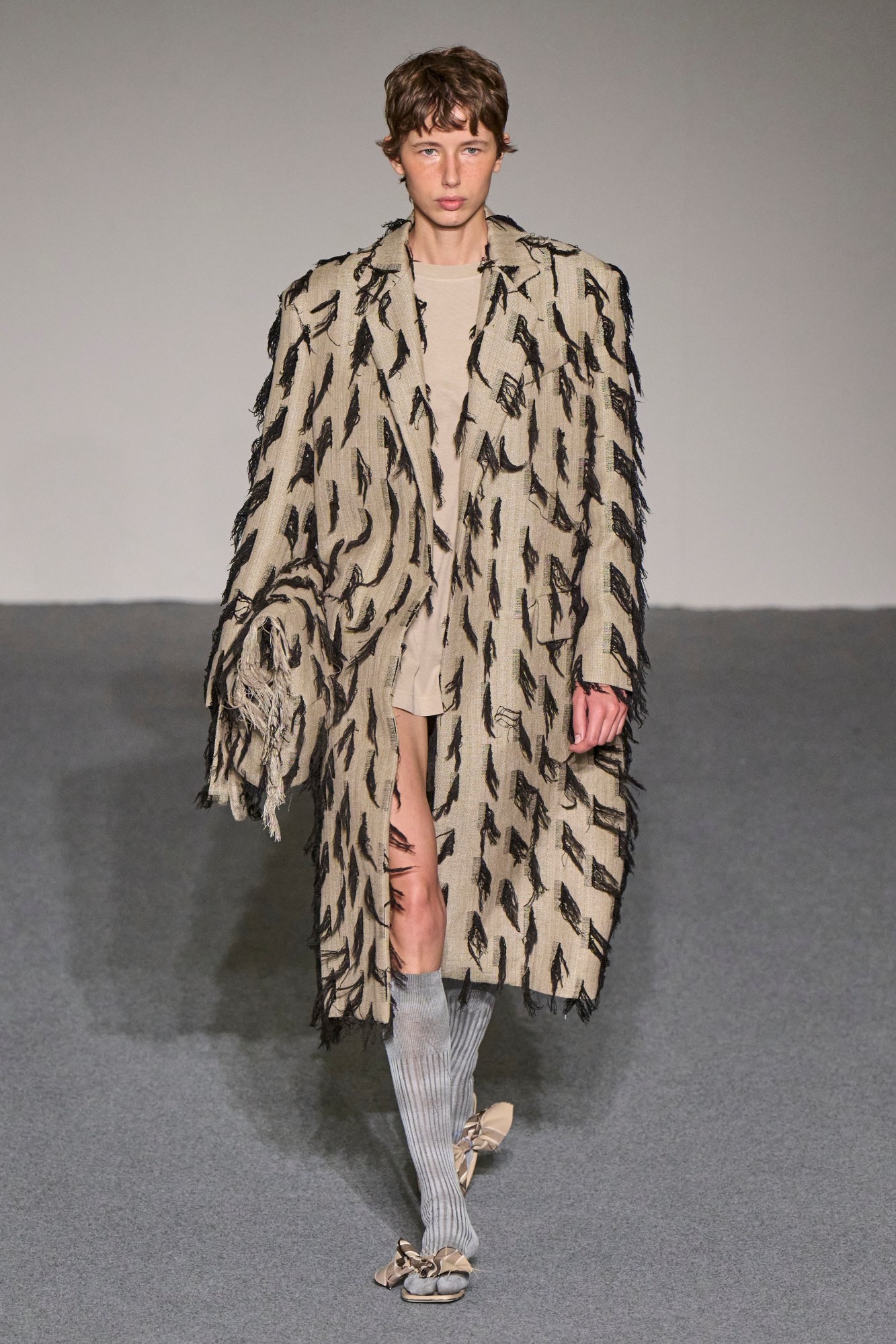

MSGM
After a questionably themed (or framed, rather) menswear collection back in June, Massimo Giorgetti’s SS24 womenswear show for MSGM saw the designer free himself from the shackles of strict thematics, and instead lean into the unpredictability of a free-wheeling design process – and all for the better. Drawing upon a panoply of references spanning the work of Milanese architect and industrial designer Gio Ponti, the large-scale installations of German artist Katharina Grosse and feminist band Chicks on Speed, the result was a collection that gleefully revelled in the fashion’s ability to distil eclectic interests into tangible products, imbued with a sense of chaos and fun.
A tinge of schoolgirl grunge was suggested by striped polo shirts with floral appliqués, worn with gradient grey jersey bubble skirts, with this mood later counterposed by the boho sexiness of slinky, see-through-macrame skirts and boxy, washed-out, cold-dyed blazers. Wool jackets were finished with patches of flouncy fringe, while blown-up, graphic gingham jerseys were playfully draped and knotted about the body into haphazard dresses and fitted, full-sleeved tops. At a time when the world feels much like a newly shaken snow globe, this was a collection that seemingly leant into that, extolling the virtues of playing things by ear, and not trying to make things make too much sense. MS
Gucci
Due to forecast torrential downpours, Gucci changed its show location at the eleventh hour from the lively, student-filled streets of Milan’s Brera neighbourhood to the colossal halls of the house’s HQ. The change of setting, however, didn’t dampen the sense of occasion, even if it was famously Tom Ford’s preferred setting for his Gucci shows and the location was mostly used for Alessandro Michele’s blockbuster spectacles. That’s where the similarities ended, though. It’s a new day at Gucci, a house that has been reinvented more times than Madonna, and now finds itself in the hands of former Valentino designer Sabato de Sarno. Read our full review here.
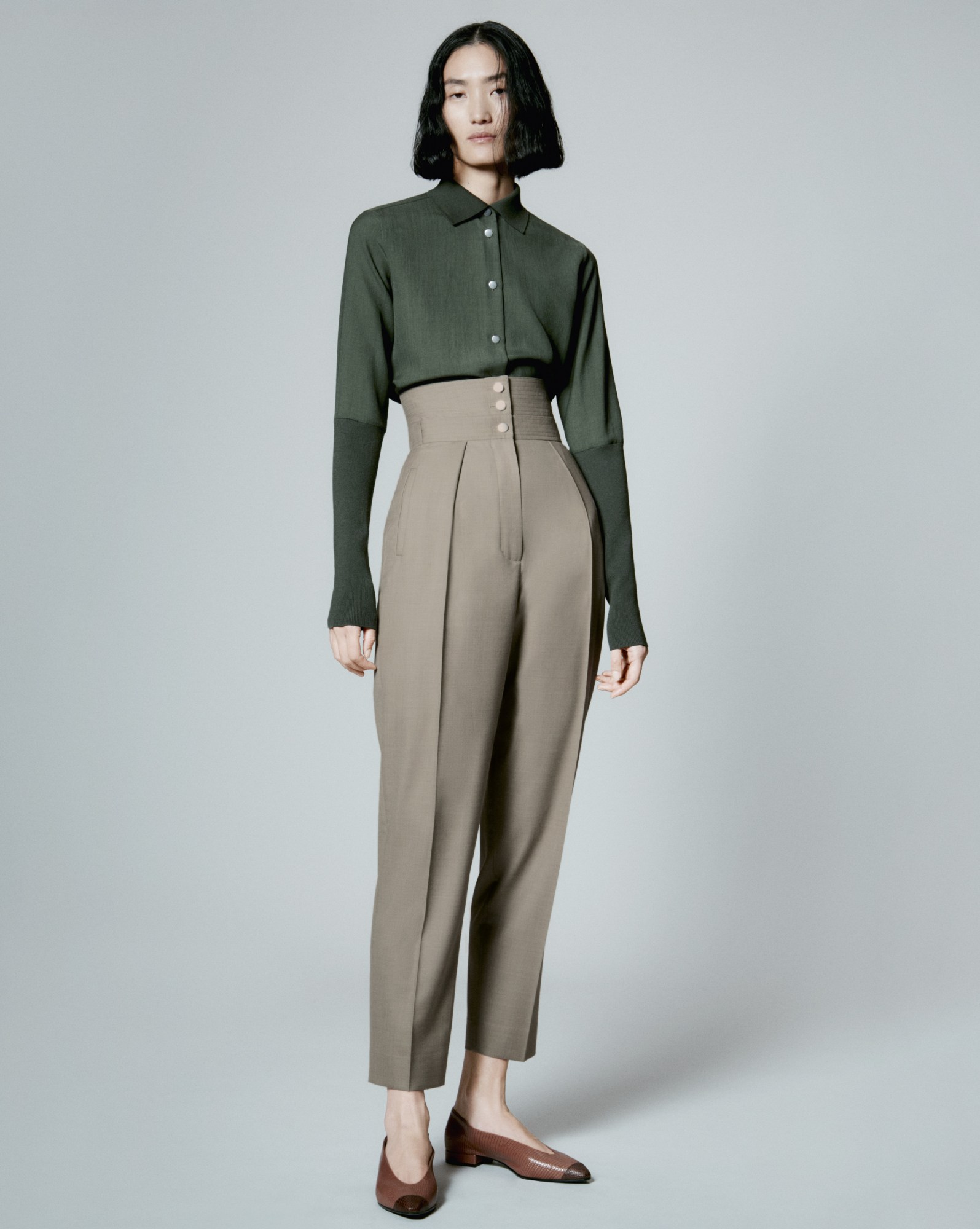
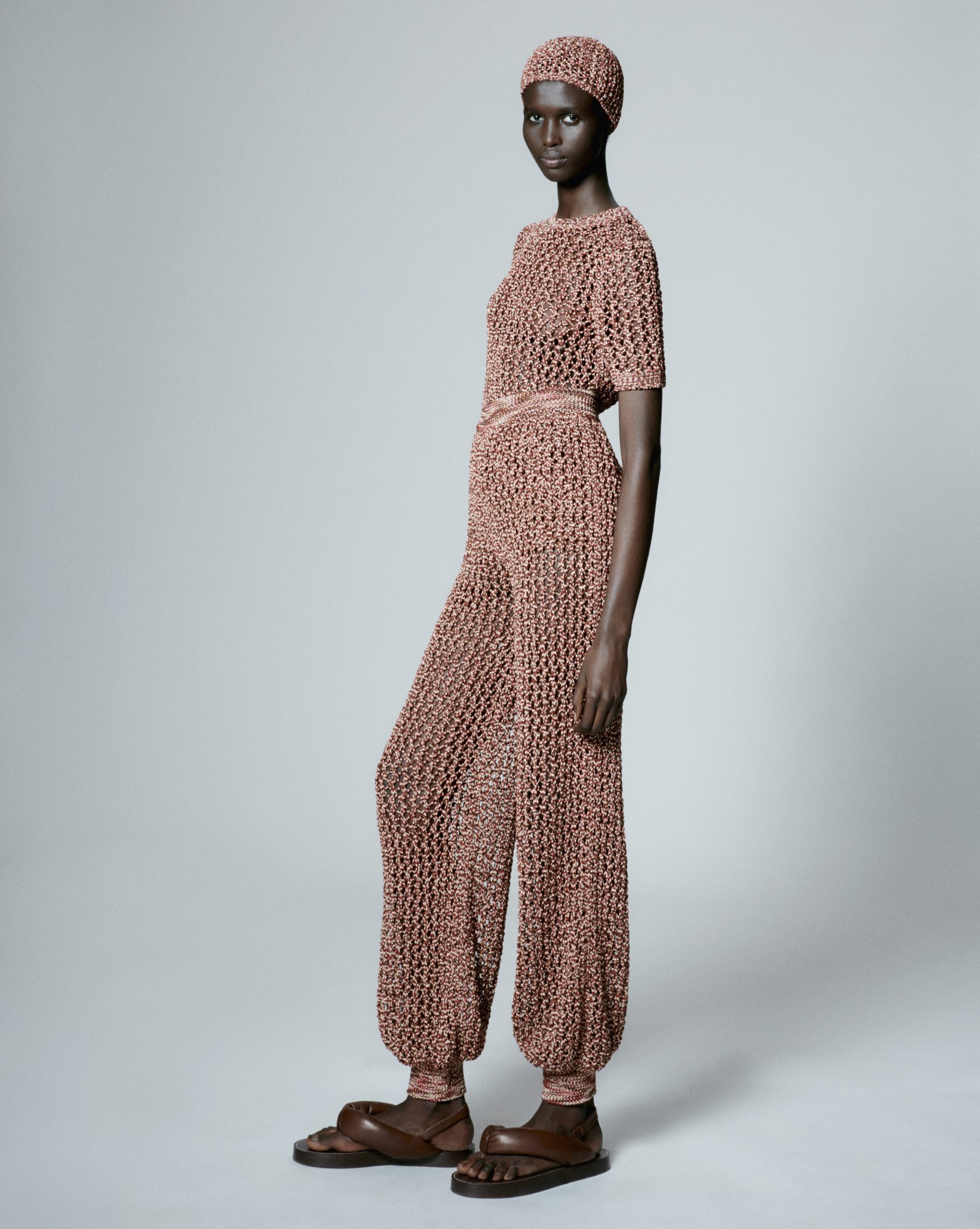
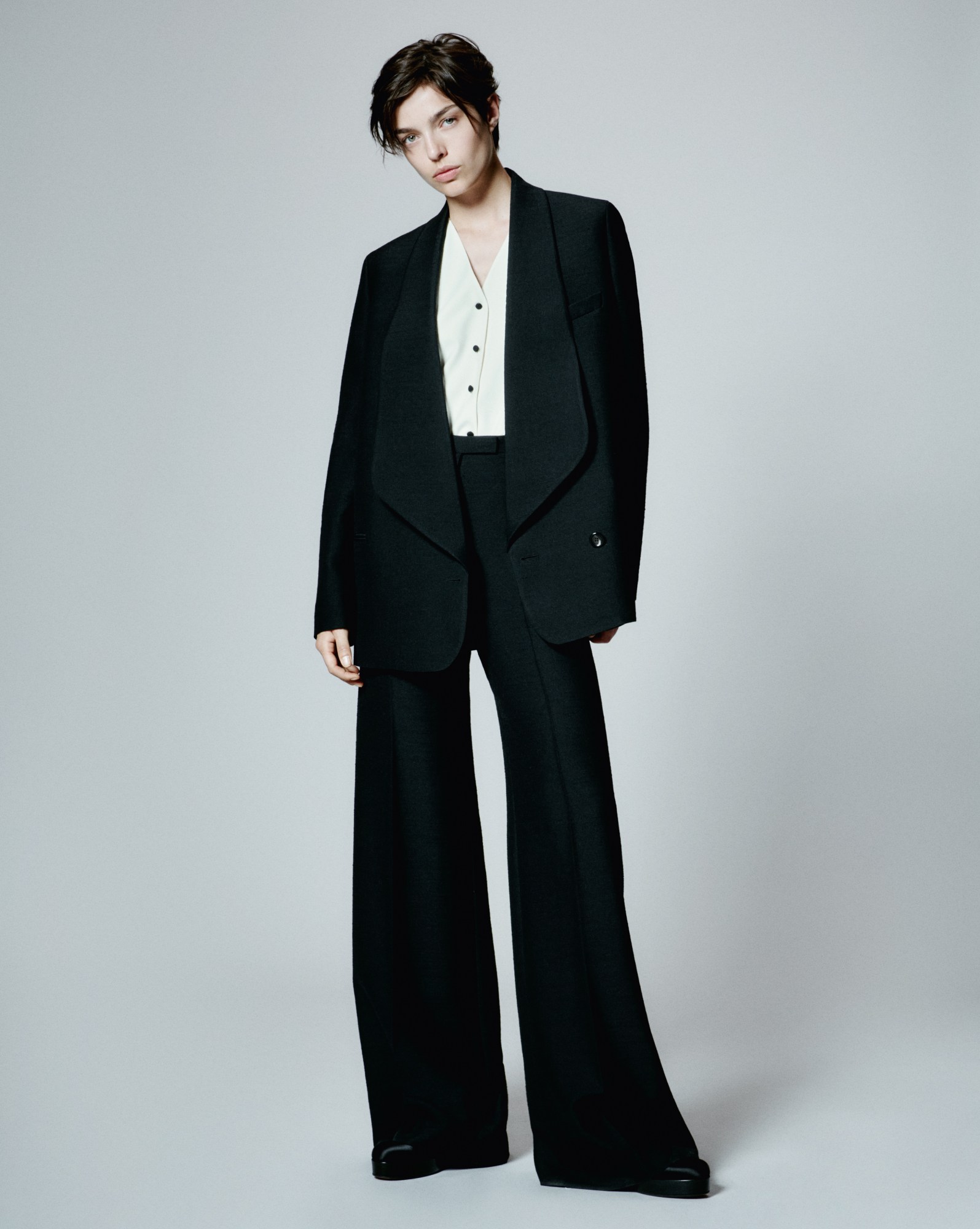
Loro Piana
Loro Piana is a name that conjures images of the most exquisite Italian craftsmanship – a a top-tier ambassador of the stoically conservative Milanese art of dressing that still reigns supreme on the Italian fashion capital’s streets. This season, though, the oh-so-Italian brand opted to look further than the sciure that perambulate the Quadrilatero della Moda for inspiration this season, setting their sights on a country that Loro Piana has long held an affinity for: Japan.
As far-flung from Milano as Japan may be, it’s an affiliation that, on further contemplation, makes perfect sense. After all beyond the conceptual clout of its avant-garde and the famed eccentricity of its street, Japan is a country whose fashion culture has long been renowned for its privileging of understated elegance and superior craft – values that Loro Piana holistically embodies. The result of this season’s research was “a wardrobe of intense simplicity,” read the show notes, a repertoire of Roy family-ready garments in sumptuous cashmeres, silk jacquards and buttery leathers.
Japanese influences predominantly made themselves felt in subtle cuts and adjustments to familiar garments – amply cut, belted jackets in dry grey cashmere, quilted silk coats, and side-buttoned jacquard blouses came with shrunken stand-up collars, and collarless wool jackets wrapped and tied at the front in classic kimono style. The palette, too, paid homage to the archipelagic nation, with an expectedly Loro Piana colour range of oatmeal, caramel, slate and mocha punctuated by muted pops of sencha and sakura, rounding out a harmonious fusion of the very best of Italian and Japanese craft. MS
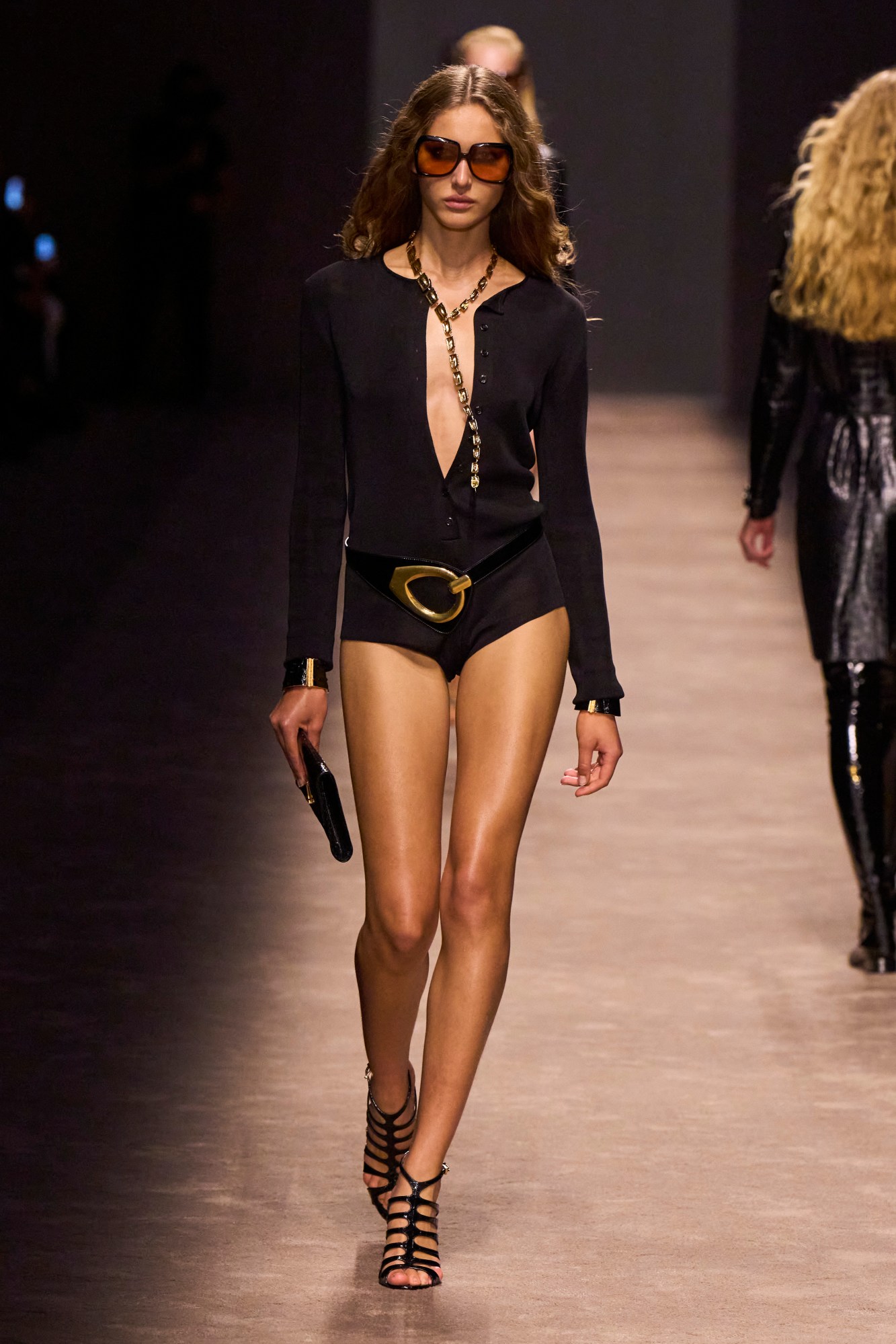
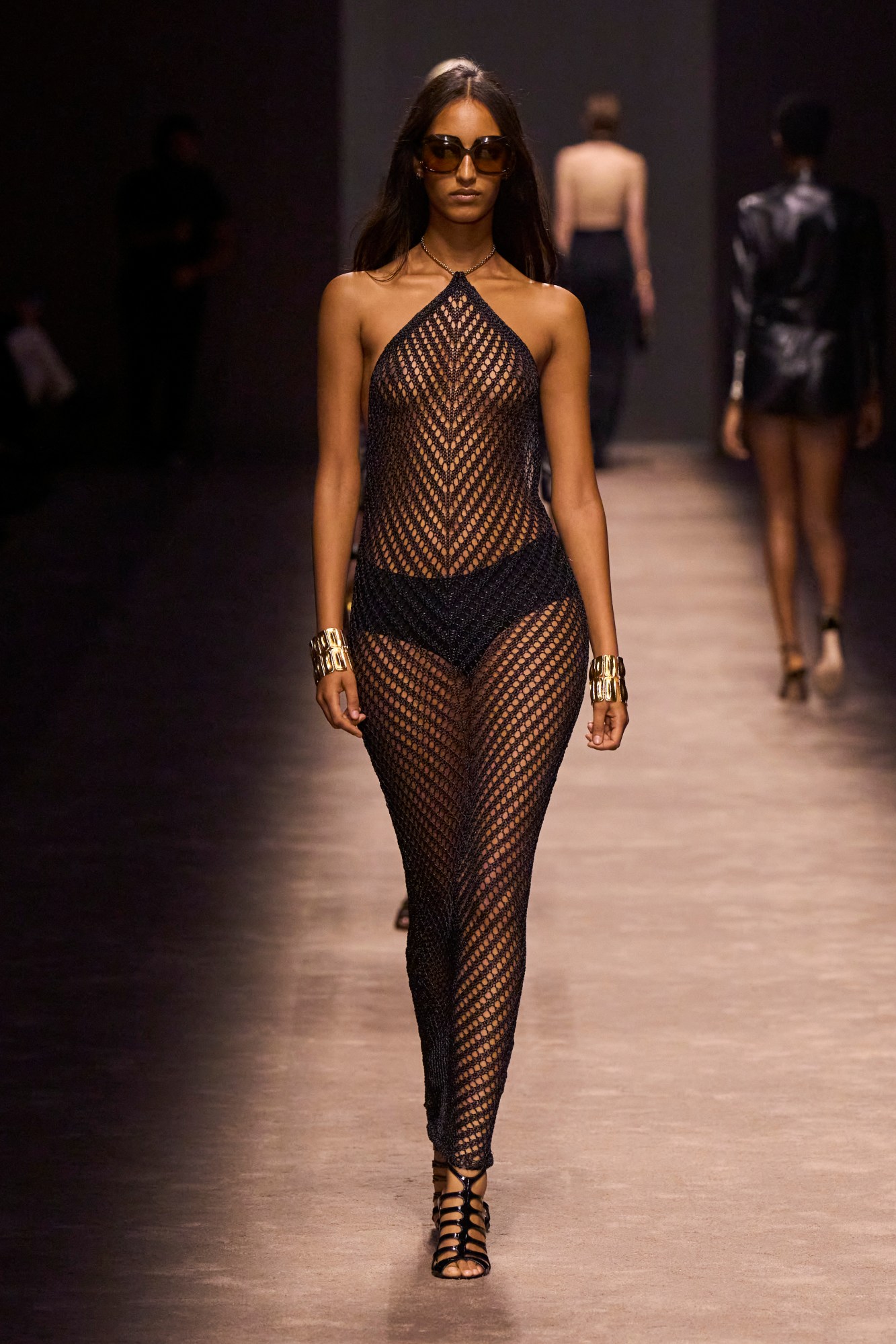
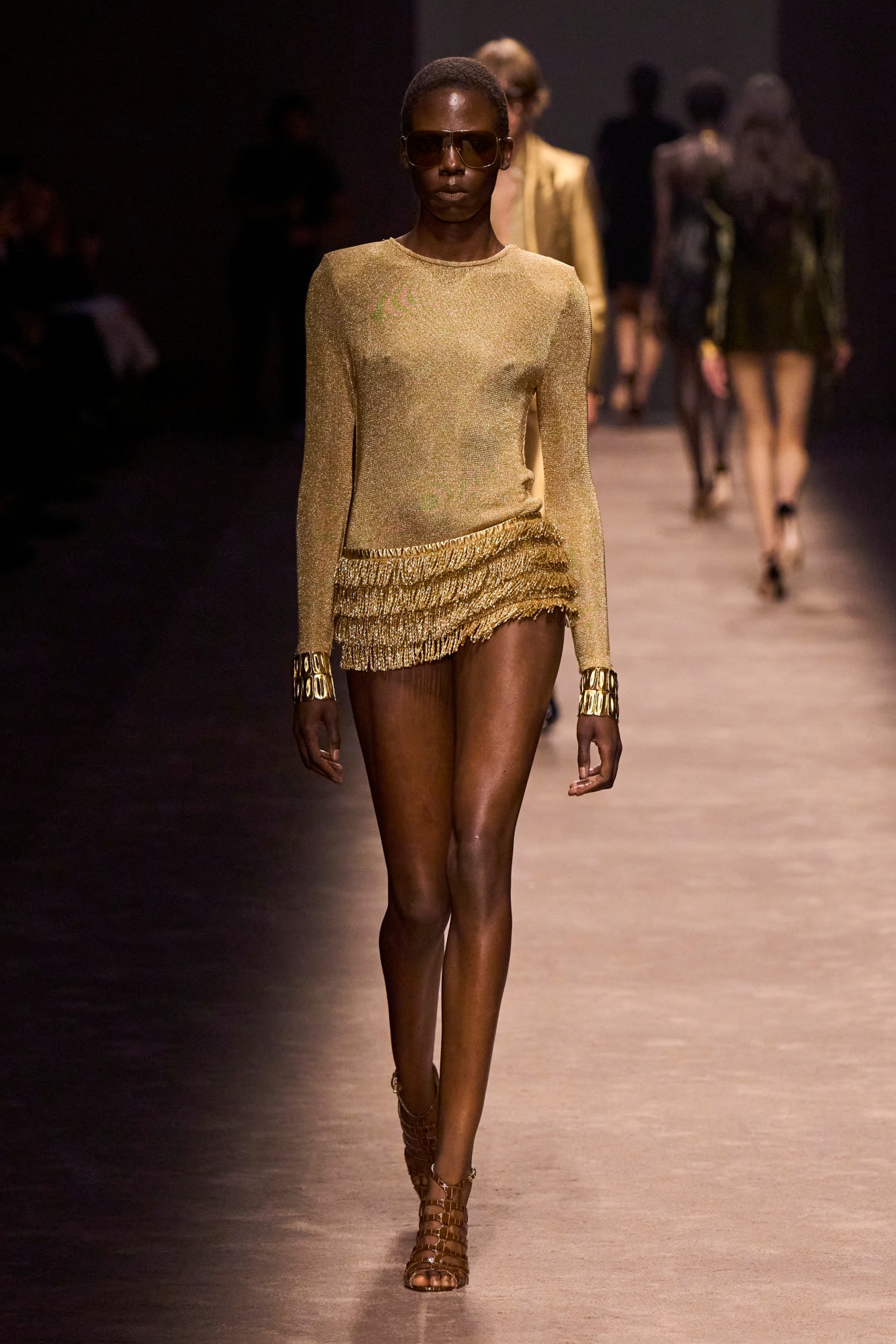
Tom Ford
Many were expecting Sabato de Sarno, due to show his debut Gucci collection later today, to be the one to bring back the sleek, pared-back sexiness of the look Tom Ford made a name for in the mid-to-late 90s during his tenure at the Italian megabrand. Last night, though, he was beaten to the chase by, well, Tom Ford – not the man himself, but rather his namesake brand, now in the hands of his right hand of almost 25 years, Peter Hawkings.
Rather than take his debut as an opportunity for tabula rasa, instead, for his debut at the helm of the mega-luxe label, Peter sought to reiterate the codes instilled at the heart of the house upon its founding, looking to Tom’s penchant for svelte, sexed-up glamour, filtered through a prism of 70s decadence. In doing so, he looked to Donyale Luna – the Black supermodel who caught the eyes and lenses of Andy Warhol and Richard Avedon in the late 60s and early 70s – tapping into her inimitable sleekness, poise and capacity for seduction to deliver a collection designed for a woman who “owns everything she wears, aware of the fact that clothing is just half of the work: the rest is body and posture,” the show notes read.
In practice, that translated to louche, sheened velvet blazers worn over sumptuous satin shirting, tucked into nightshade micro-shorts, darned with metallic thread; slinky, full-sleeved knit playsuits and floor-skimming gowns styled with louche belts, replete with giant, brushed gold clasped belts; exquisite leather tailoring in the form of squarish, radically abbreviated calfskin flightsuits, unzipped to the navel, and a slim crocodile trench that was anything but quiet in its declaration of utmost luxury, with its extroverted sensibility compounded by a fringed rara dress and sharp-shouldered, skinny suits in glittering gold lamé. All in all, a collection that gave good cause for hope that Tom didn’t just pass on his name to Peter, but also his sartorial Midas touch, too. MS
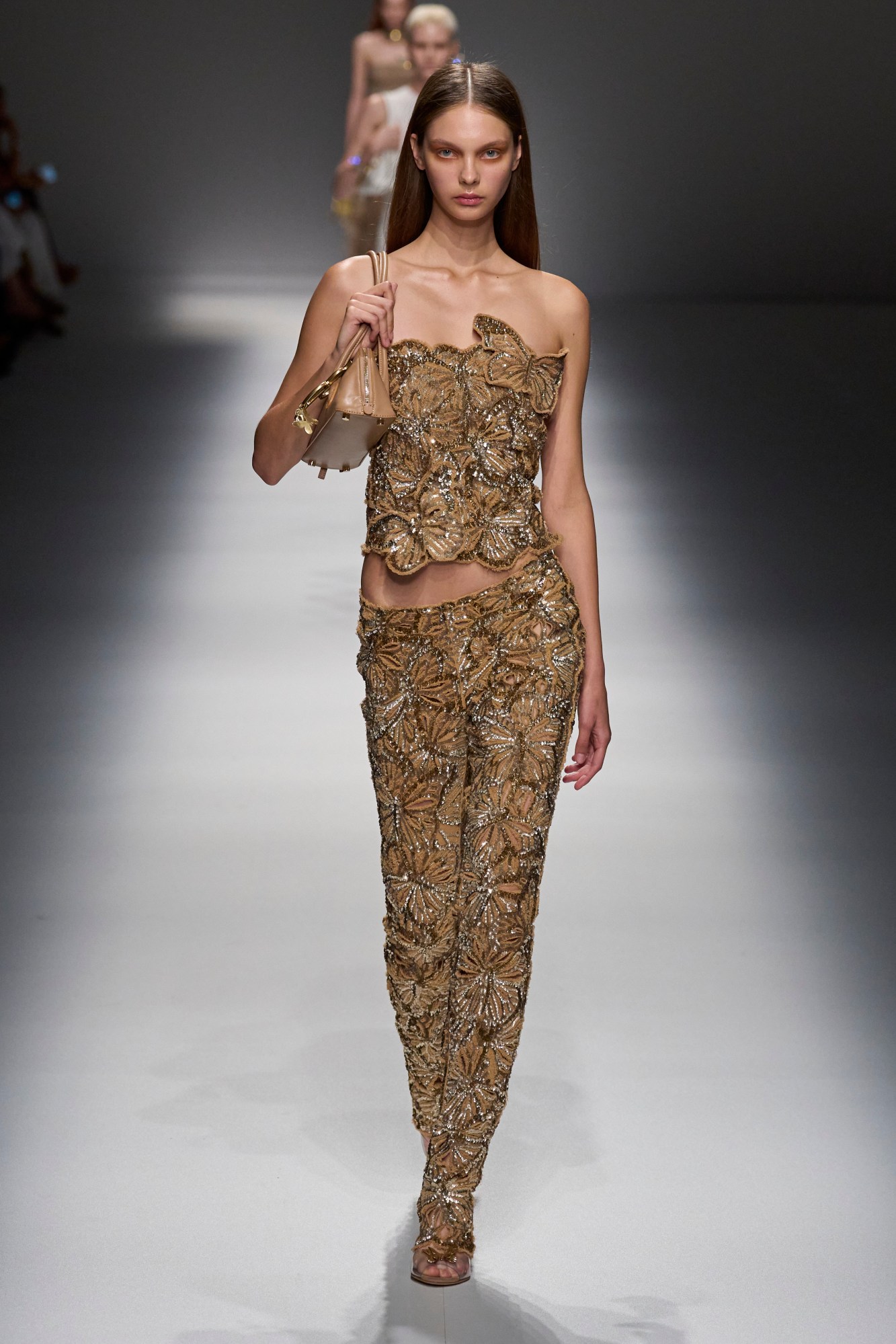

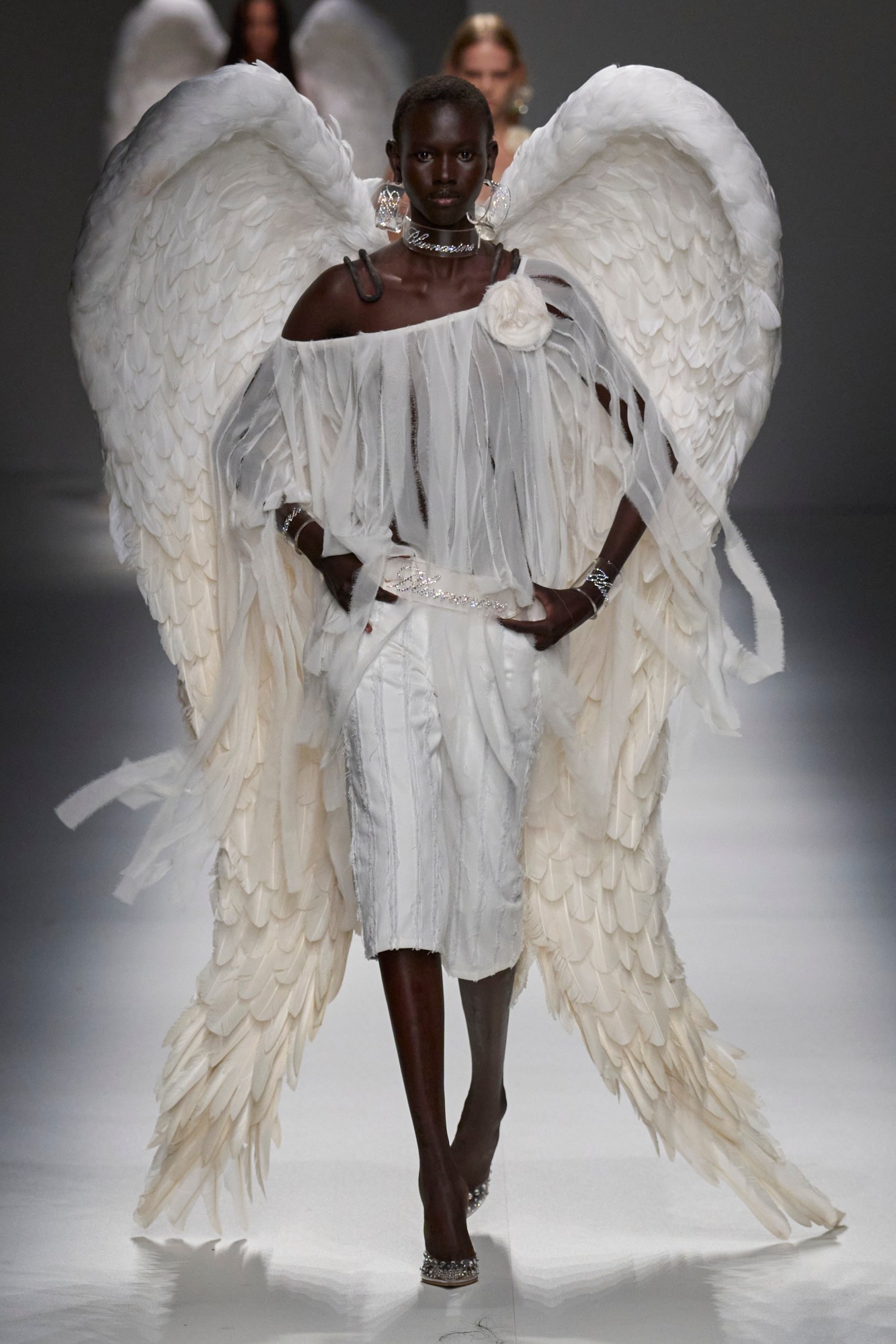
Blumarine
Few luxury brands have carried the banner for the seemingly never-ending Y2K revival quite like Blumarine over the past few years, with Nicola Brognano’s collections for the brand almost inevitably replete with rhinestone-embroidered denims, dramatic crops and hipbone-framing cutouts, and chintzy butterfly appliqués. It’s a formula that has endeared that brand to a new generation of nostalgist fashion fans, fuelling its renewed relevance in turn, but this season saw the buzzy creative director take a rather more mature tack, channelling a refinement and elegance – particularly with respect to innovative drapework – that felt like a welcome addition to the brand’s aesthetic vocabulary.
“I wanted to emphasise the luminous sense of lightness of the summer season,” he wrote in the show notes. “Clear, limpid colours; slim silhouettes,” resulting in gold-foiled leather corsets with matching culottes, gathered white jersey tube dresses and bandeau tops with drooping cowl necks – which recurred in contrasting diaphanous cream and black – and, later on, gauzy poet-sleeve shirting and uni-shouldered tops cut in streams of gossamer cloth. Granted, glitz wasn’t entirely amiss, with bikini bottoms and spaghetti-strapped bralettes appearing as gigantic beaded butterflies, and the heavy-handed kitsch that customers flock to the brand for prevailed in hulking goose-feather angel wings that filed down the runway on numerous looks – to this viewer, a rather too on-the-nose cypher for the collection’s sense of lightness, both in colour and texture, that served as the collection’s throughline. Still, on the whole, it represented a significant graduation in perspective for the brand, taking it beyond the familiar chords it’s been hammering out for some time. MS
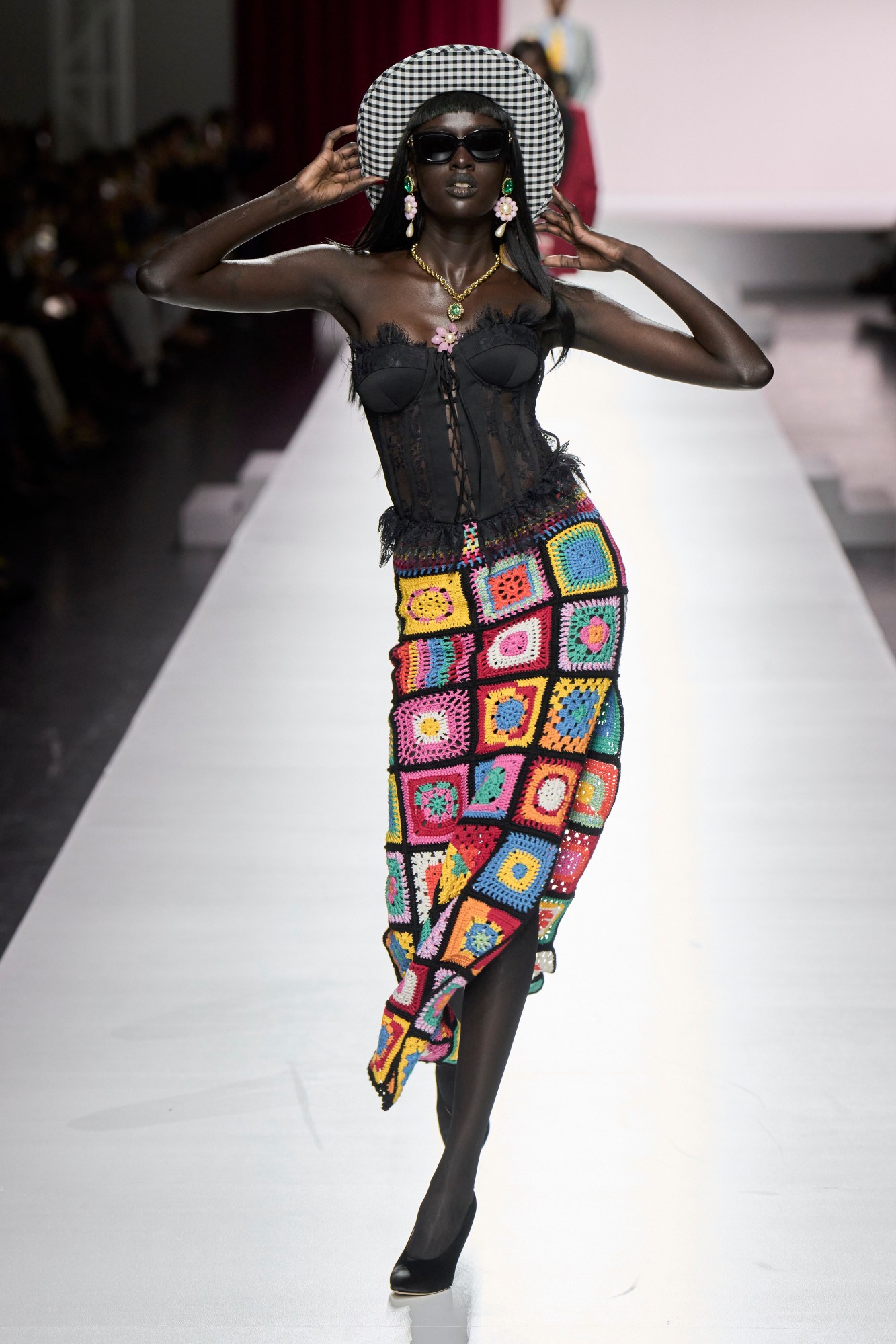
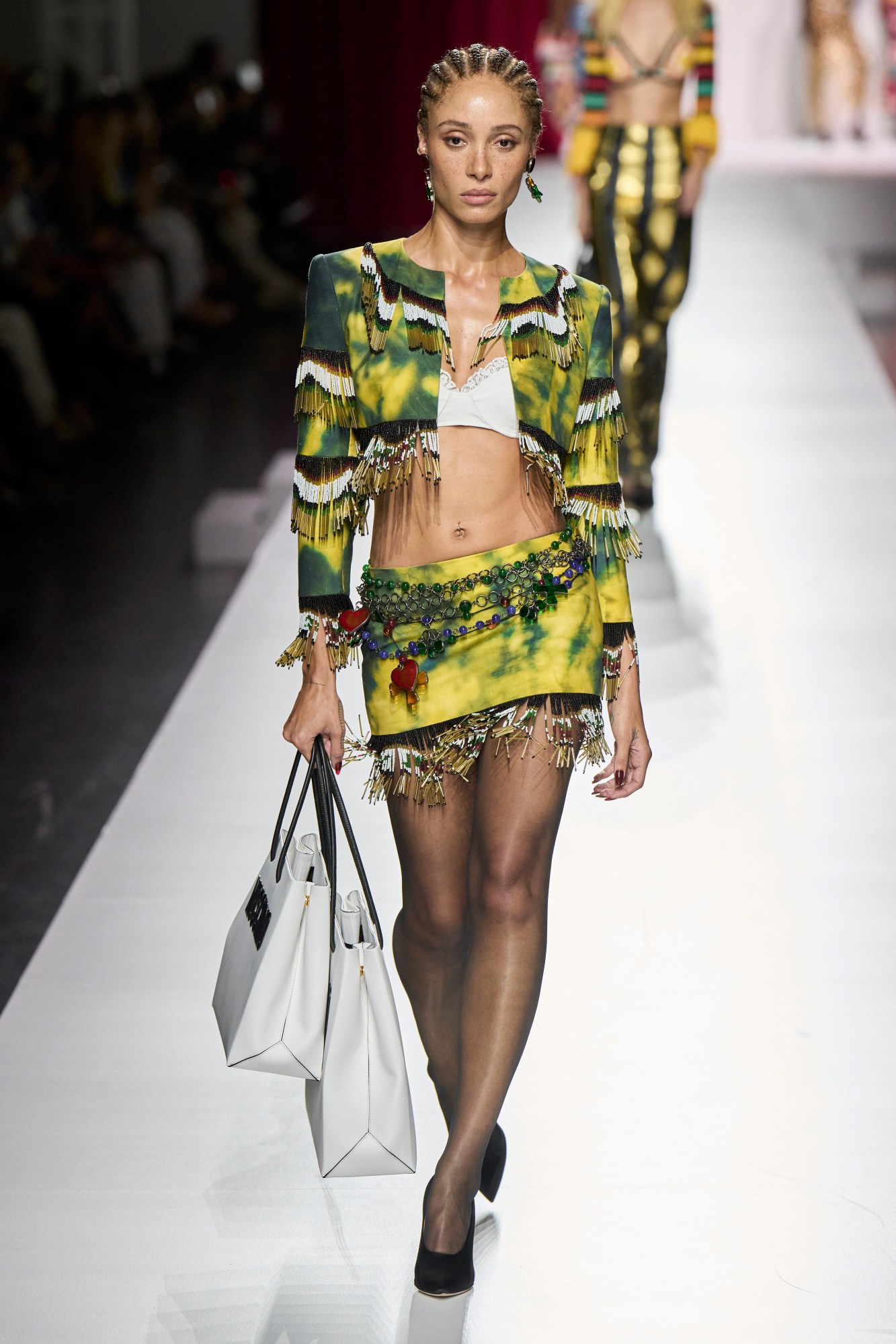

Moschino
40 years ago, a 33 year old fashion illustrator and designer decided to set up his own label, taking traditional Milanese tailoring and giving everything from jeans to evening gowns a whimsically kitsch edge through plastic egg embellishments, bottle top studs and whatever other unexpected thing his mind would fathom next. That was, of course, Franco Moschino, and his namesake brand’s SS24 collection told a four part story of his time as creative director of the house, from its foundation in 1983 to his final collection in 1993 before his untimely death to an AIDS-related illness.
Rather than a chronological narrative – Franco was said to hate retrospectives and looking back – each chapter honoured his legacy by having leading stylists reimagine his codes for today. Opening the show was a series of looks by Carlyne Cerf de Dudzeele, who played on the middle ground between streetwear and evening wear with modest tailored trousers and turtleneck knits under uber-casual grey marl hoodies and gorpy half-zip anoraks. 90s beanies over the heads of each of these models were embellished with cutesy stars and overstated diamonds alike, the latter also lining necks, wrists and slotted together to form a shimmering diamante vest.
Following that was Gabriella Karefa-Johnson’s mini-collection that she called Nowstalgia, that played on the early 90s insignias of Franco’s work that have become wardrobe staples of the hyper-plugged in stan girls of today – we’re talking the cowboy hats, lacy corsetry, heavy fringing and bright and bold DIY crochet knit bra tops, cardis and mini skirts you’d see on the crowds at a Harry Styles concert. Contrastingly, Lucia Liu explored the designer’s romantic sensibilities. Frilly mini dresses in dainty peach, lacy lingerie layered over lacy lingerie and botanical bushes fashioned into bras and briefs were then paired with suit blazers cropped into bralettes, waistcoats given a corset’s cinch and love heart motifs cut over the belly button of LBDs and high-slit maxi skirts. The Franco tee emblazoned with “Protect Me From The Fashion System” also made an appearance alongside a bouquet bonnet and a rigid pencil skirt spliced with flowy, excessively bowed baby pink fabrics twirling with each step.
Finally, before a violinist played one of Franco’s favourite songs, Gloria Gaynor’s “I Am What I Am”, and a train of models led a tribute to those lost in the AIDS Crisis, with simple see now, buy now tees where all proceeds will go to the Elton John AIDS foundation, Katie Grand presented her ode to the late designer. This one was closer to the Moschino we know today: lycra bodywear was adorned with cartoonish genitalia or simple expressive punctuation marks, tutus made from bras were reminiscent of “Like A Virgin” Madonna and oversized tees, simple sweats and tiny bags were emblazoned with “Loud Luxury”. “Is it possible to explore the idea of luxury through a megaphone? Can good taste withstand all this noise?” Katie said in a statement. If there was a house founded on that premise, exploring how camp brashness can speak to elegance, it’s Moschino of course.
If there was a throughline, it was the way in which Franco’s time at Moschino may have been merely a decade long, but his impact – from his slogan tees to his crochet knits and rebellion against quiet luxury before quiet luxury was coined – is everywhere yet rarely recognised. TG


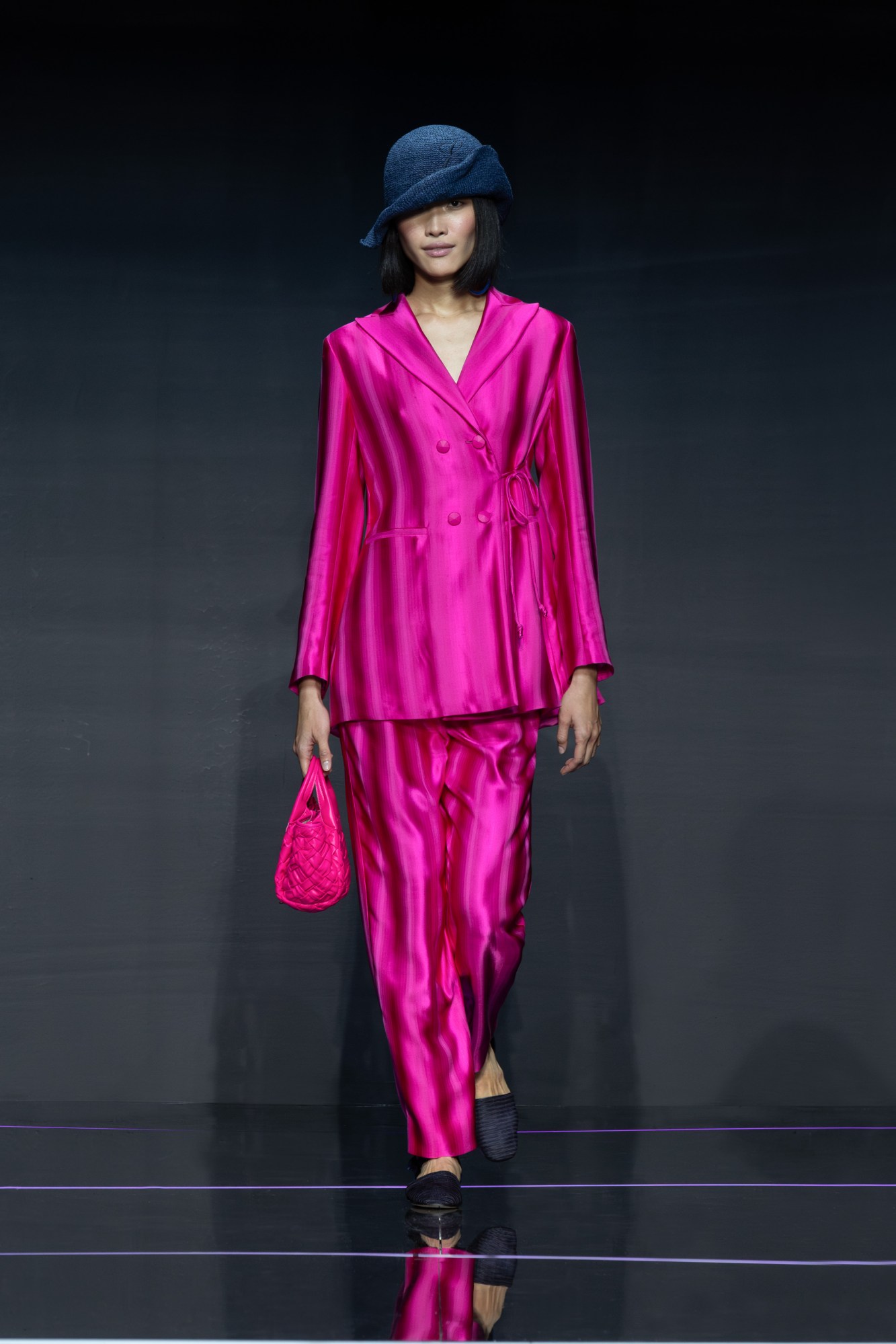
Emporio Armani
Emporio Armani’s SS24 collection was a whisper; a plastic bag drifting through the wind; a mild spring air. Playing on the idea of lightness and weightlessness, in physicality but also in thought and desire, the Milanese brand’s offering worked with breezy fabrics and dainty embroidery to create delicate garments that looked like they could be swept up into the air with the slightest gust of wind.
Long, body-accentuating drapes of fabrics as wispy as a butterfly’s wing came in watercolour hues of lilac, violet, pink and blue like they were formed within the world of a Petra Collins music video, while trousers and a matching cropped tailored vest were fashioned to look like they were made from fine gold-toned leaves. Tailored blazers slightly blowing open, short shorts and embroidered jackets fashioned in Eastern styles fluttered against the bodies they revealed below, often barely touching them at all. This sense of freedom that comes with a lack of baggage or troubles was also expressed within the sheer flat sock shoes and strappy woven sandals, and the see-through and mesh bags only able to carry a few essentials, if anything at all.
Occasionally there were moments of heaviness: from the thick black belts, big-framed sunglasses hanging off them, that stood out against the delicacy of the looks below, and the beaded chainmail vests and piles upon piles of glass bead necklaces. But this heaviness was offset by the extreme revealing of the skin below, making many of the garments seem barely existent or like they were the only weight the body has to carry. The Emporio Armani woman is carefree, elegant and waltzing mindlessly through her summer calmly – she is where we all want to be. TG
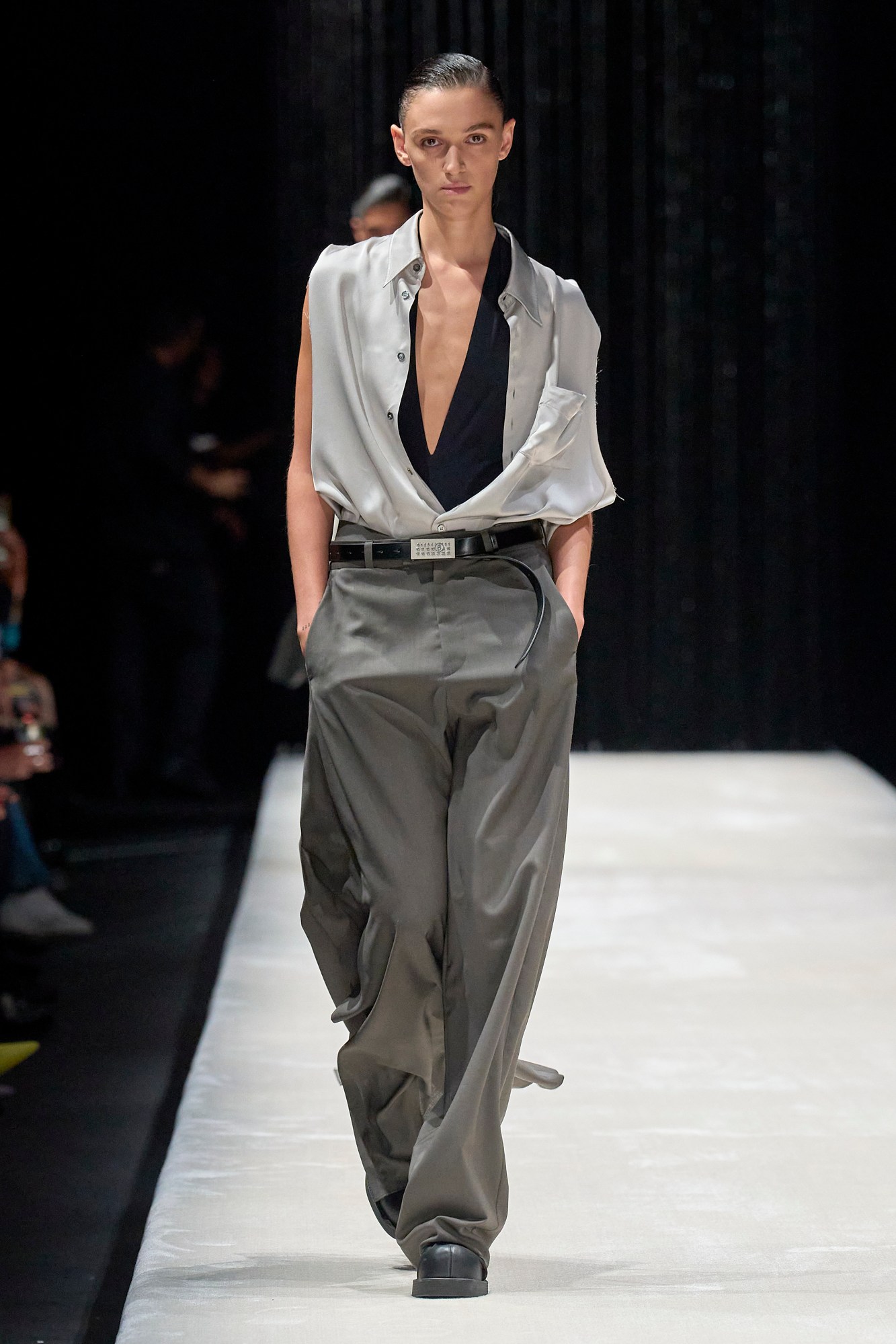
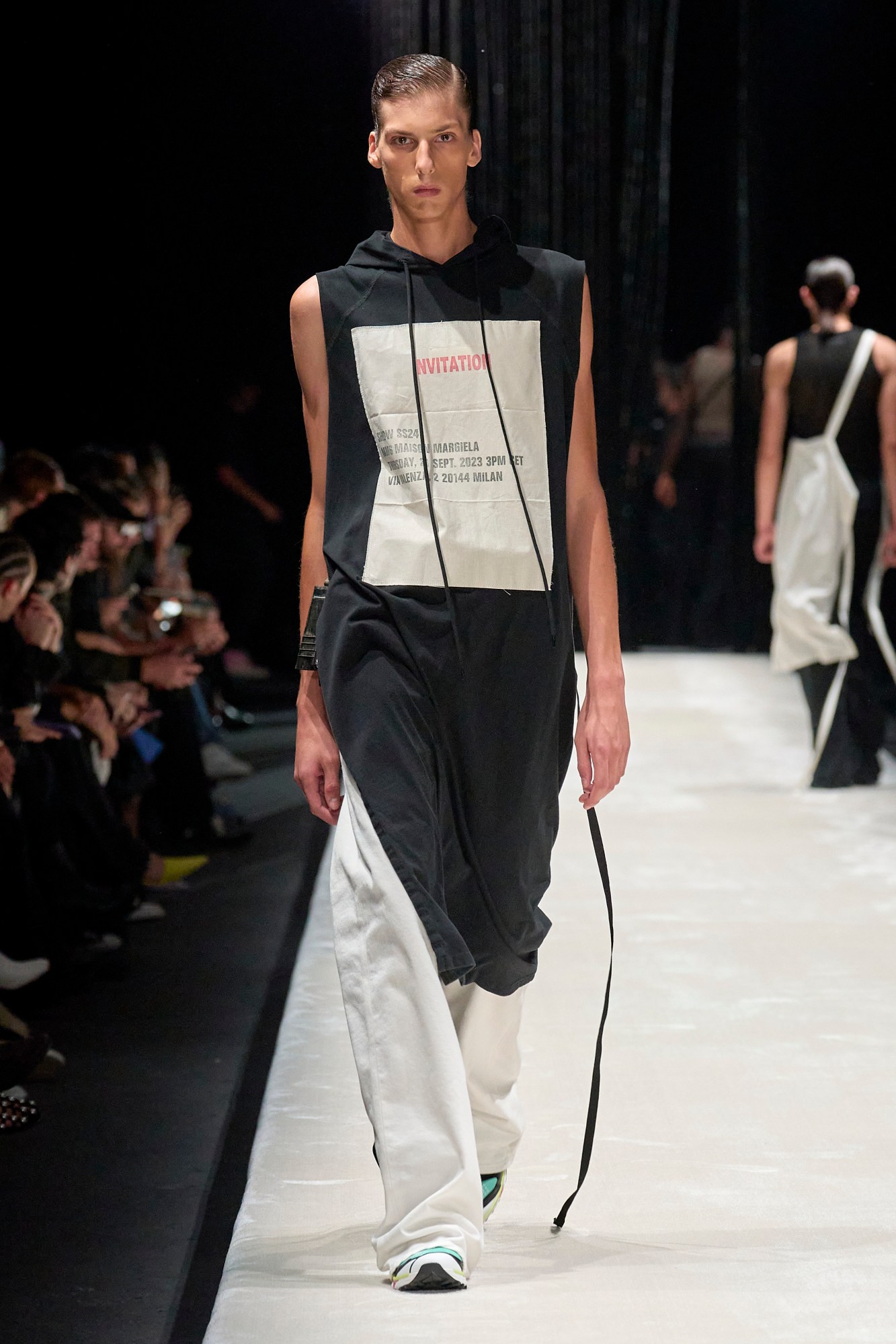

MM6 Maison Margiela
MM6 is a team. Unlike its older cousin, the Maison Margiela mainline, it’s run not by a superstar creative director, but instead by a fastidiously crafty (and anonymous) cohort building on the foundations of Martin Margiela’s vision – before he ditched fashion to become an artist, that is. When you look at an MM6 collection, this collective approach is immediately apparent, both in the cohesive, long-term design codes across the years and the consistently wrought finish. SS24 is a case in point, sharing a rawness and radical experimentalism you often only see in a designer’s forgotten toiles.
That’s not to call it unpolished, though. Those exposed-shoulder aprons on show were draped with impossible precision, using lapelled overcoats and suit flap pockets. Heck, even lace-trimmed dresses took on the apron template, tails a-swing as models filed past. Elsewhere, football net vests, tagged only with the MM6 logo came with heavy, flared suit pants, also finished with pockets (this time welted), alongside other minimalist but impactful touches. Across the board, legs and feet were shrouded under billowing pants, or at minimum, encased neatly in hulking heavy-duty footwear, primed with reinforced toes.
The mystery designers behind the collection cited the recent heat waves we’ve been experiencing across the world as an inspiration, which went some way to explaining the easy, languid and bowed-in-place approach at play. After all, when the weather is as chaotic as ours, a wardrobe ready for quick adaptations is a must. But that alone, as a rationale, undersells the craft at play. Lip service, perhaps, for something far smarter. This was an exercise in reduction and technical, off-kilter tweaks, proving that something as banal as a woollen cardigan or indeed the office-worker’s suit jacket can take on a whole life of its own when elongated ad ridiculum.
Kooky, sure, but it was also chic, arriving neatly buckled across the waist with indie-sleaze slim plaque-buckle belts and some of the peaked lapels and power shoulders you’d expect from 80s Saint Laurent. Surgeon coats in black satin, sliced across the sleeve, gave way to boyish shapes, while burnished leather coats – think: 90s mall goth – were given a graceful new life. Again, the house’s meta modus operandi was present in the calico-cotton show invitation designs, rendered as hoodie prints, tank-top dresses or a scissor-cut crop top. Where a t-shirt was made in opaque material, it read, ‘opaco’; where it was soft, it read ‘satiné’. Of course, it’s this dry humour that makes MM6: what you see is what you get, until you look properly.
Prada
Backstage at the SS24 Prada show in Milan, surrounded by journalists, Miuccia Prada put the record straight: “I got tired talking about ideas — let’s talk about clothes.” But the clothes that she and Raf Simons presented spoke for themselves, offering up enough ideas and craftsmanship to warrant a thesis on the codes and concepts of Prada, both then and now. In true Prada fashion, this was a collection about paradoxes – although it always is, so much so the house named its new fragrance after the word – replete with tensions between diametrically opposed concepts: lightness and darkness, masculine and feminine, weightless movement and structural gravitas, strength and fragility, utilitarianism and decoration. The backdrop to the show – Alien-like slime trickling through the ceiling, forming gloopy piles on the peach-coloured steel floors — was coupled with Bernard Herrman’s distinctive score for Vertigo; the result a paradox in and of itself: sci-fi futurism meets vintage Hitchcockian suspense… Want the full lowdown on the collection? Read our review here.
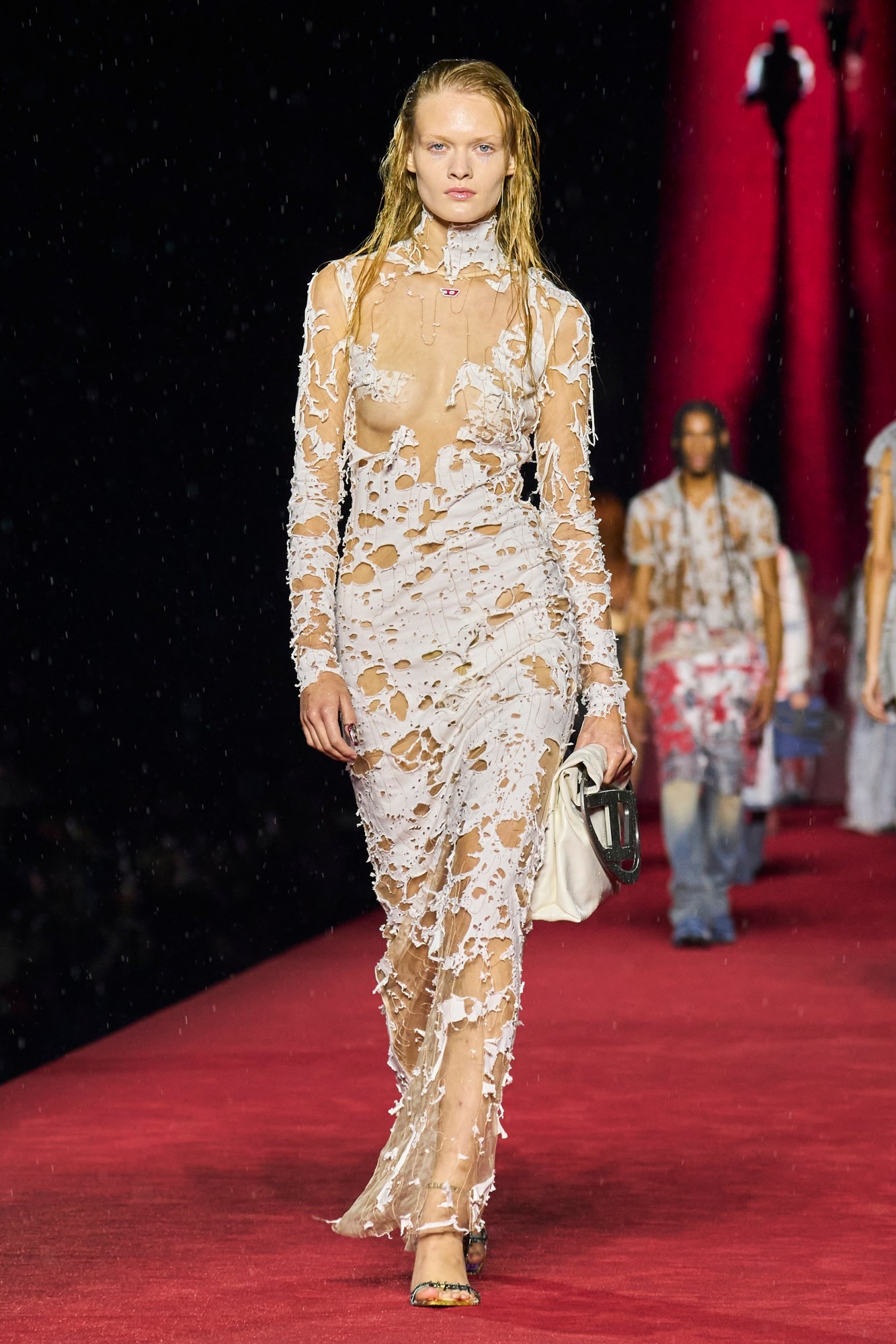
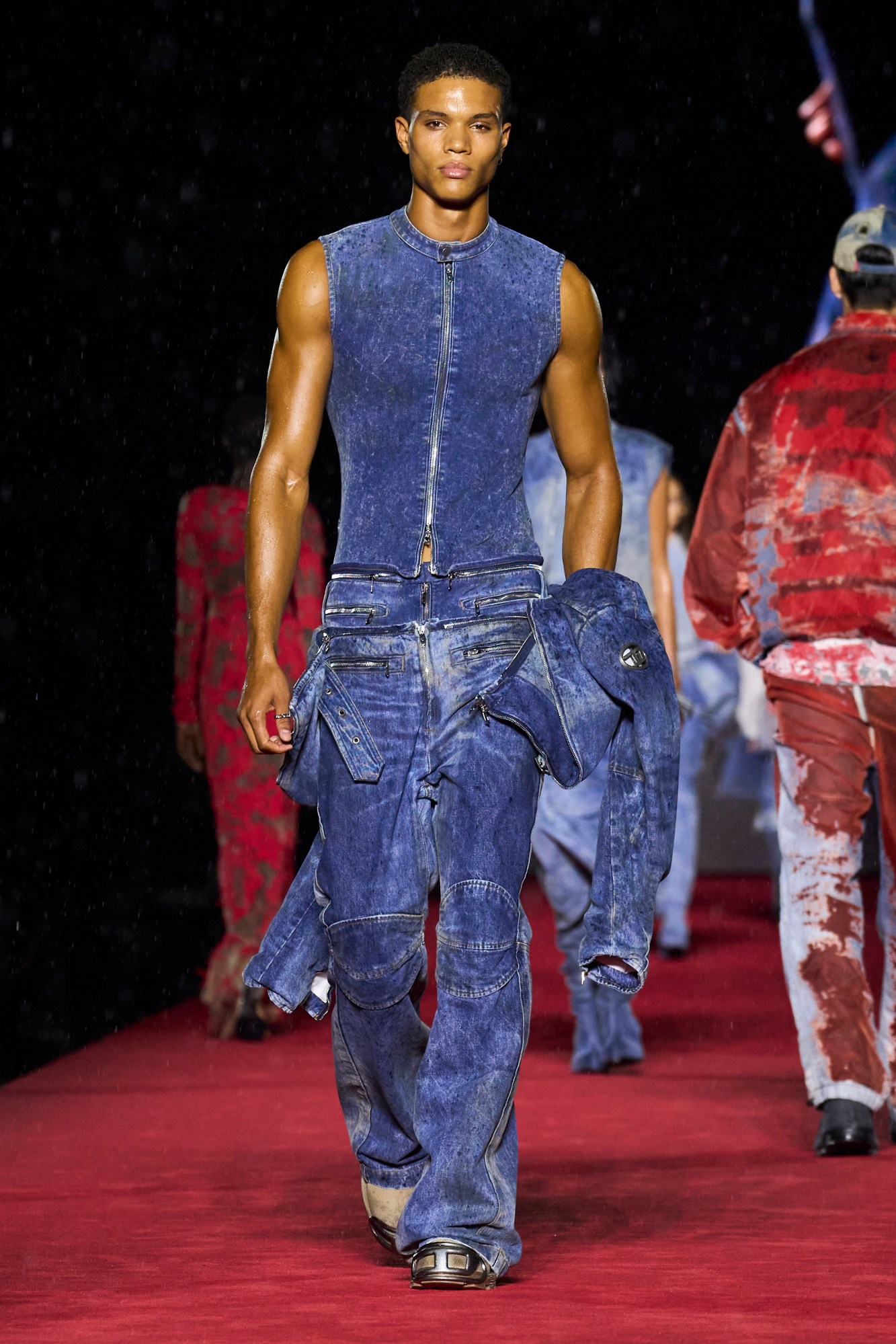
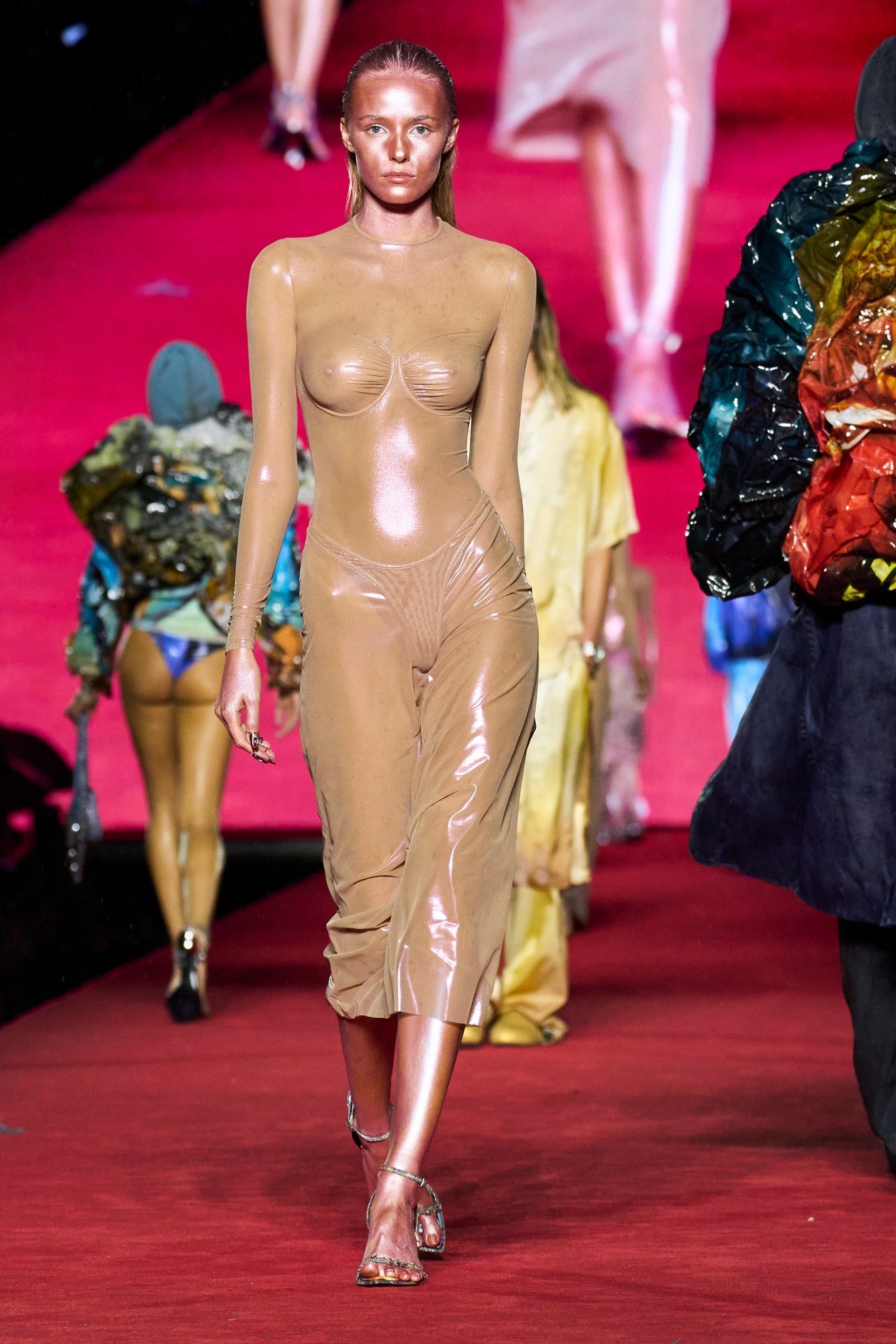
Diesel
Just when you thought trashion wunderkind, Glenn Martens, had exhausted the limits of late nineties to noughties nostalgia, last night, he fielded yet another slew of so-bad-they’re-good archetypes. Shown as part of an eight-hour rave open to the public and fash-packers alike, Diesel’s SS24 outing will later morph into a film festival across the weekend, showing cult classics and choice picks including Mulholland Drive and Fantastic Mr Fox, hand-picked by Glenn himself.
Soundtracked by thrashing techno and heavy downpour (when will they learn?!), Mr. Martens’ latest collection was expectedly laden with denim, seen across the now signature shredded loom dresses, which came this time in sweater-dress and cardigan format. Where looms remained intact, denim was instead butterfly-knifed to pieces, forming the sultry equivalent of a ghillie suit. Positively sexy and proudly sex positive, this was about unbridled hedonism, rooted in that very slogan the brand holds dear: ‘For successful living’. Hitting the club? You’re going to look hot. Hooking up? You’re going to look hot. Getting milk? Yep, you know the answer.
Scratch a little deeper, though, and there’s more to this than the Y2K-clubwear. Those denim skirts, which almost disintegrate to reveal a sheer layer beneath, are nothing less than artisanal. Even the specialised treatments and charms Glenn applies at the label he earned his reputation at, Y-Project, were merged into the Diesel DNA, elevating the brand from a hot-topic house of the moment to something craftier. Here, black denim boots were washed out into rusty browns and then finished with phone-sized pockets on the surface. Chaotic slay!
Later in the show, military camouflage was further shredded across shirting, twisted-neck dresses and field jackets while combat netting was printed and seemingly sprayed for the ultimate urban witch’s midi skirt. As for the models dipped in white paint – also rocking net or stencil-painted leather jackets and moto trews – these could easily have been jump-scare characters in a Lynchian film.
As a collection, it had serious range. As well as hardy denim and workwear, there were inside-out, contrast-piped lingerie dresses, outlined with thongs and bras, and gossamer, nude-tone bodycons, ribbed with panties and bra or a swimming costume silhouette. Finally, the last few looks would – dress-code permitting – make serious occasionwear: black and caramel dress trains were bonded or scantily attached to swaddling cloths, themselves wrapping across the torso as a bra or plunging V-neck before caressing the head like a babushka. No doubt, we’ll be seeing at least one of these on the tapis rouge come new year. Like it or not, trashion has never looked chicer. JB


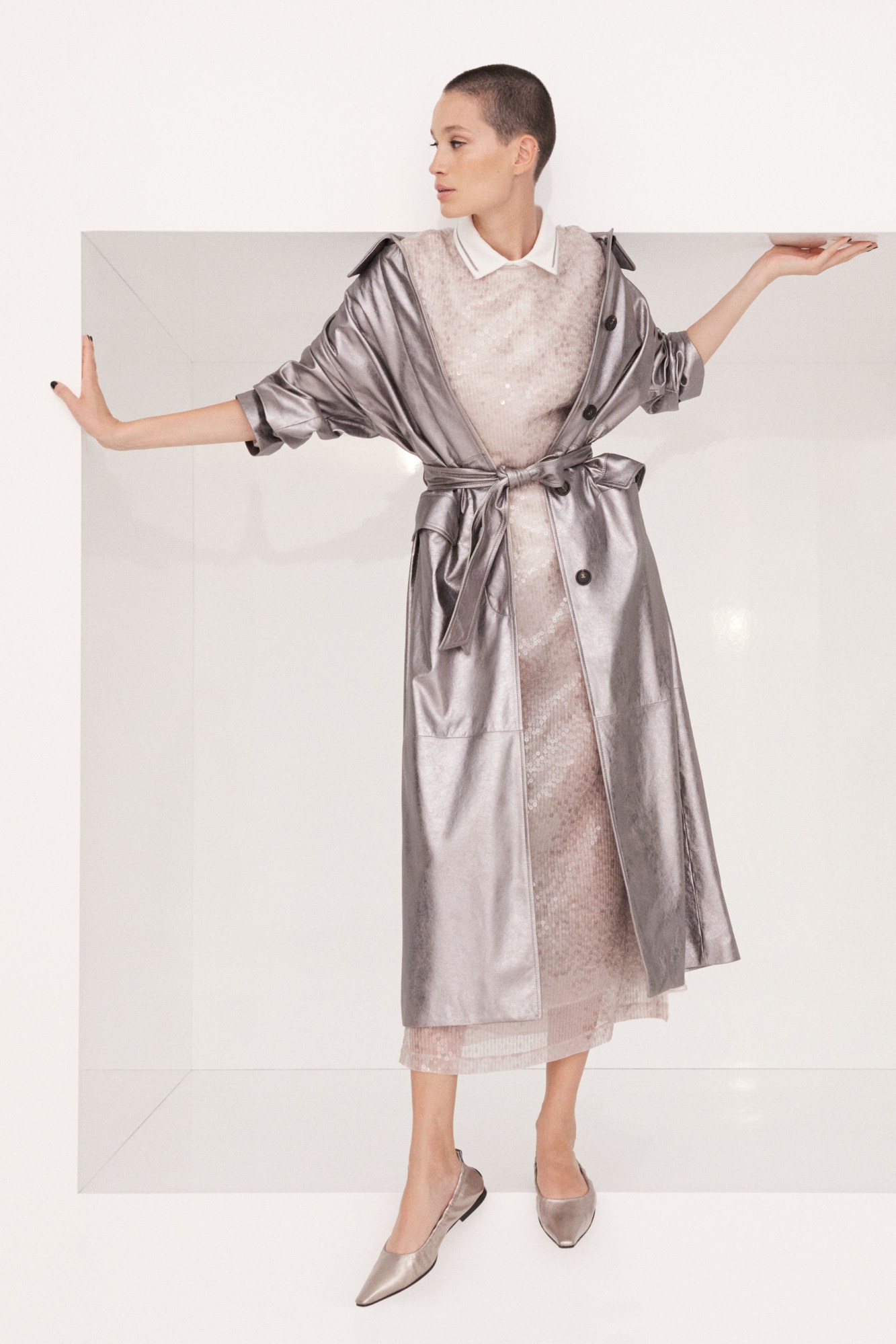
Brunello Cucinelli
In the age of chaos, a little sartorial balance is always welcome. Indeed, Brunello Cucinelli’s womenswear served just that. At once nonchalant and studied in its precision, the collection comprised oatmeal overcoats, cut to mirror the roomy appeal of a boyfriend’s blazer, slipped on while waiting for the taxi home. Underneath, technical macramé dresses, frilled at the hem kept it resolutely summery. As for those panelled totes, also in oatmeal, these were just the ticket for anyone looking to upgrade their raffia Loewe bucket bag to something a little more IYKYK. Elsewhere, butterscotch midi skirts were complemented by splayed cuff shirts and itsy-bitsy bralettes whose felted texture was further enriched with a graze of silvered detailing. Chic points!
It wasn’t strictly business, though. Chrome double-breasted jackets combined with drawstring-fastened pencil skirts and white sneakers are the answer to any stealth-wealther’s garden gala fit. In fact, there were even hints of boho at play, especially in the short-sleeved raffia-weave cardigans and Daisy Dukes. Granted, these came in a mocha brown, ensuring the house’s signature restraint was kept intact. In a similar vein, the poncho cardigans in heavy cable-knitting – speckled with glittery flourish – teamed with pleated culottes inspired directly by the form-fitting cuts of Italian tailoring. A clean juxtaposition.
No doubt, Brunello Cuccinelli has caught wind of an industry hunger for minimalism and the unanimously touted quiet luxury. Good for Brunello! In many ways, he could do as he has done for the past half-century but expanding market share – which is what brands do, in case you forgot – requires tapping new audiences. Planet Mode’s more stylised dressers are just as important as the new swathe of quiet luxurists. As such, he’s not resting on his cashmere-lined laurels. With corseted denim tops and indigo jeans akin to 50s workwear – albeit decidedly tailored – this was about subtly directional tweaks, too. Much like Phoebe Philo-era Céline, its distinction lay in chic suiting and shirting, carefully using the drape of a collar across the shoulder or the hourglass cinch of a champagne satin coat to nail his style proposition. It’s promising to see a brand so rooted in knitwear and ‘staples’ push the boat out, especially while the more fashun houses are tagging on to what Brunello has done from day dot. This is a girl that can do both. JB
Fendi
For his latest Fendi show, Kim Jones was inspired by his morning promenades through Rome, from his hotel to his office in the Palazzo della Civiltà Italiana, during which he plugs in his AirPods and imagines passers-by as characters in an imaginary movie. The Eternal City, after all, has provided a backdrop to cinema for more than a century, its global image shaped by Fellini and Sorrentino films. It’s one of those places, like New York or Tokyo, that invites outsiders to project a fantasy onto its grand architecture and local cast of characters, and though he has now been shuttling between London, Paris and Rome for more than two years, Kim is no exception. “In Rome, there is an elegance in ease and not caring what anybody thinks — that is real luxury,” he explained before the show. “It is about women who dress for themselves and their own lives … It’s not about the spectacle of being looked at but the reality of wearing and the confidence and chicness that comes with it. It’s not about the confidence of being something but being someone.” Read our full review here.
Steven Meisel for Zara
From the famed, racy Madonna photobook Sex in 1992 to provocative fashion editorials in the 00s, photographer Steven Meisel’s lens has become one of the most recognisable, noteworthy and desirable in the industry. Now, he’s brought his vision to a new collection at Zara entitled Steven Meisel New York. Photographed over 26 of his life muses – Linda Evangelista, Irina Shayk, Amber Valetta, Kaia Gerber, Gigi Hadid, Alton Mason, Eva Herzigova and Kit Butler to name a few – the collection sees nods to popstars and rockstars; from faux fur coats and croc-prints that nod to the glamour of the sixties, the culture that defined Steven’s childhood, to printed tees, grungy mesh knits and punk tartan skirts that speak to the Y2K decades whose aesthetic Steven helped define. Naturally, the collection is sexy, too, with Linda, Irina and Kit all donned in kinky leathers such as thigh-high boots, cropped moto jackets and low-rise, laced-crotch trousers, and Gendai Funato wearing nothing more than an oversized Steven Meisel New York cashmere scarf – we wouldn’t expect anything less. TG
